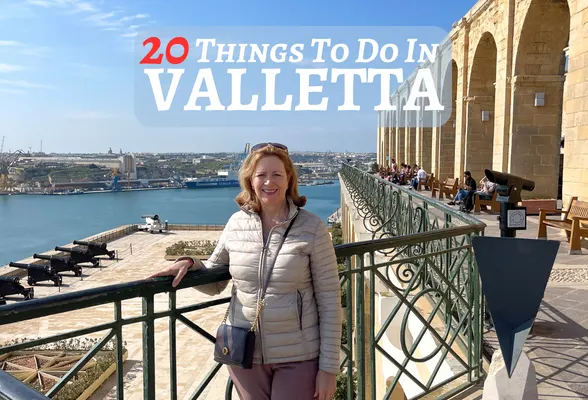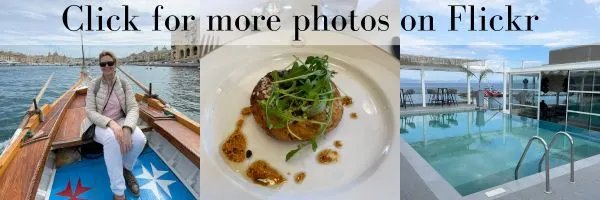Just across the water from Malta’s capital Valletta, the Three Cities of Malta are fingers of land that reach into the Grand Harbour. Discover the top things to do in the Three Cities, with picturesque narrow streets, impressive palazzos and 16th century fortifications, overlooking the sparkling water. These historic neighbourhoods make an ideal day trip from Valletta, so read on for our travel guide and everything you need to know when you visit.
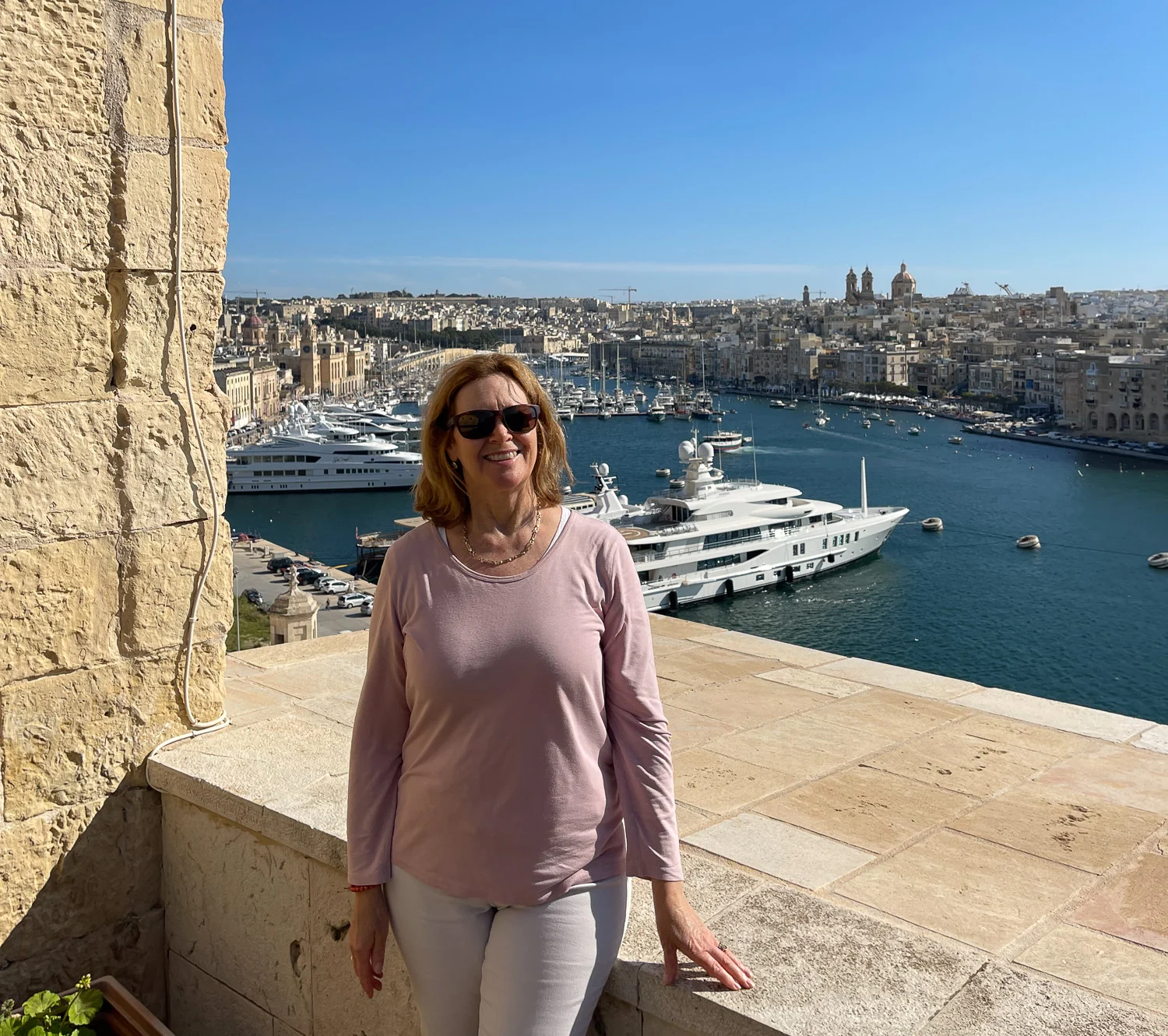
This article may contain affiliate links that provide commission on purchases you make at no extra cost to you. As an Amazon Associate I earn from qualifying purchases.
What are the Three Cities?
Located on peninsulas of land opposite Valletta, the Three Cities in Malta provide sheltered harbours between them. Each of the Three Cities have two names that are used interchangeably, the original Maltese name and the newer name given to them by the Knights of Malta who established their first base there.
Birgu (Vittoriosa) is the oldest and was build up by the Knights of Malta as their headquarters when they arrived on Malta in 1530. Senglea (Isla) gives more of a local experience with few formal sights, while Bormla (Conspicua) is set back behind these peninsulas. Also jutting into the harbour is the peninsula of Kalkara, which can be seen from across the marina from Birgu.
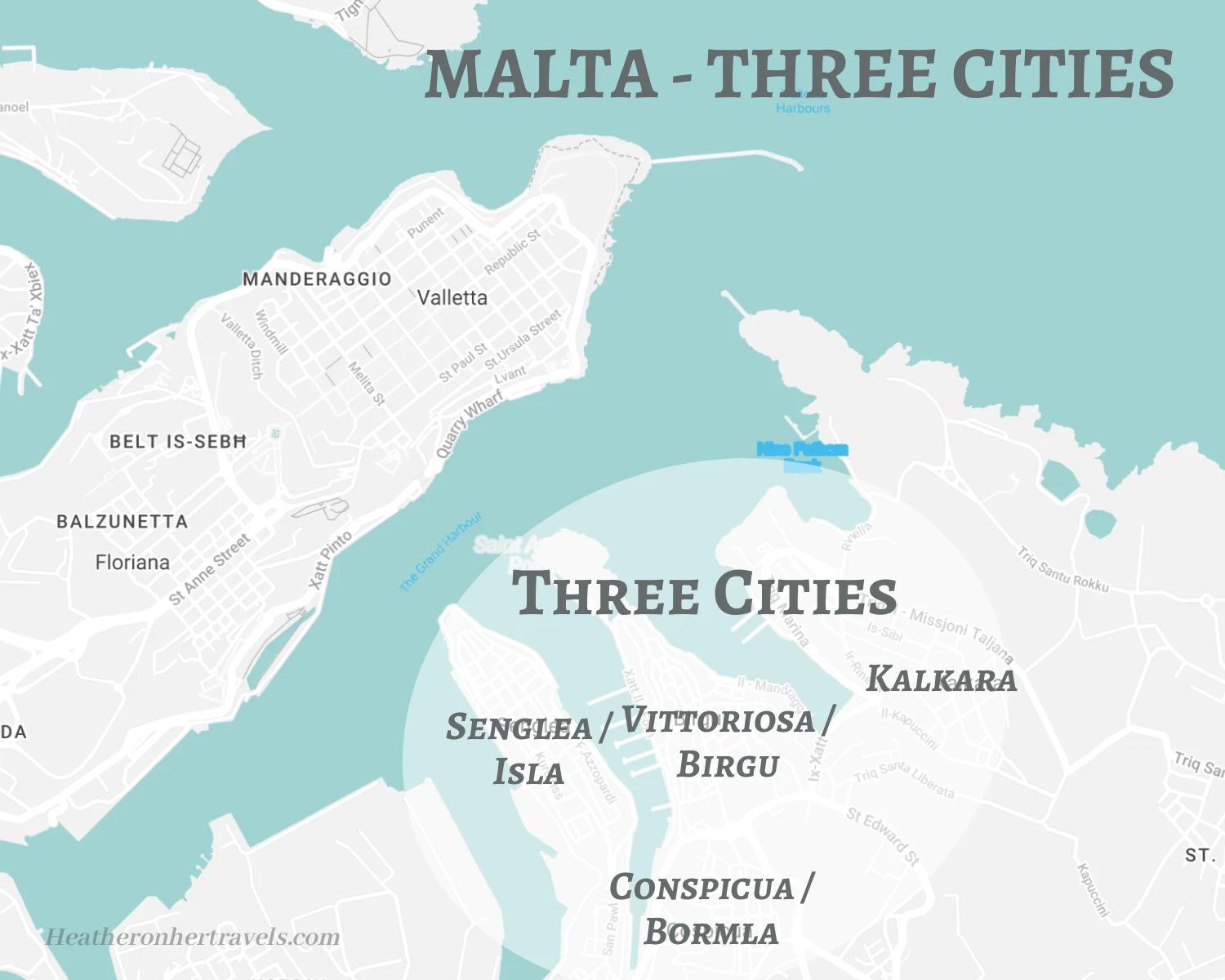
A visit to the Three Cities of Malta makes a pleasant day to walk around and admire the old buildings, have a drink or lunch on the quayside and visit a couple of museums.
The Valletta 3 Cities Ferry is an inexpensive way to cross the harbour on a catamaran from Lascaris Wharf. A more atmospheric crossing is on one of the old wooden Dgħajsa boats that go from the same location on the Valletta side.
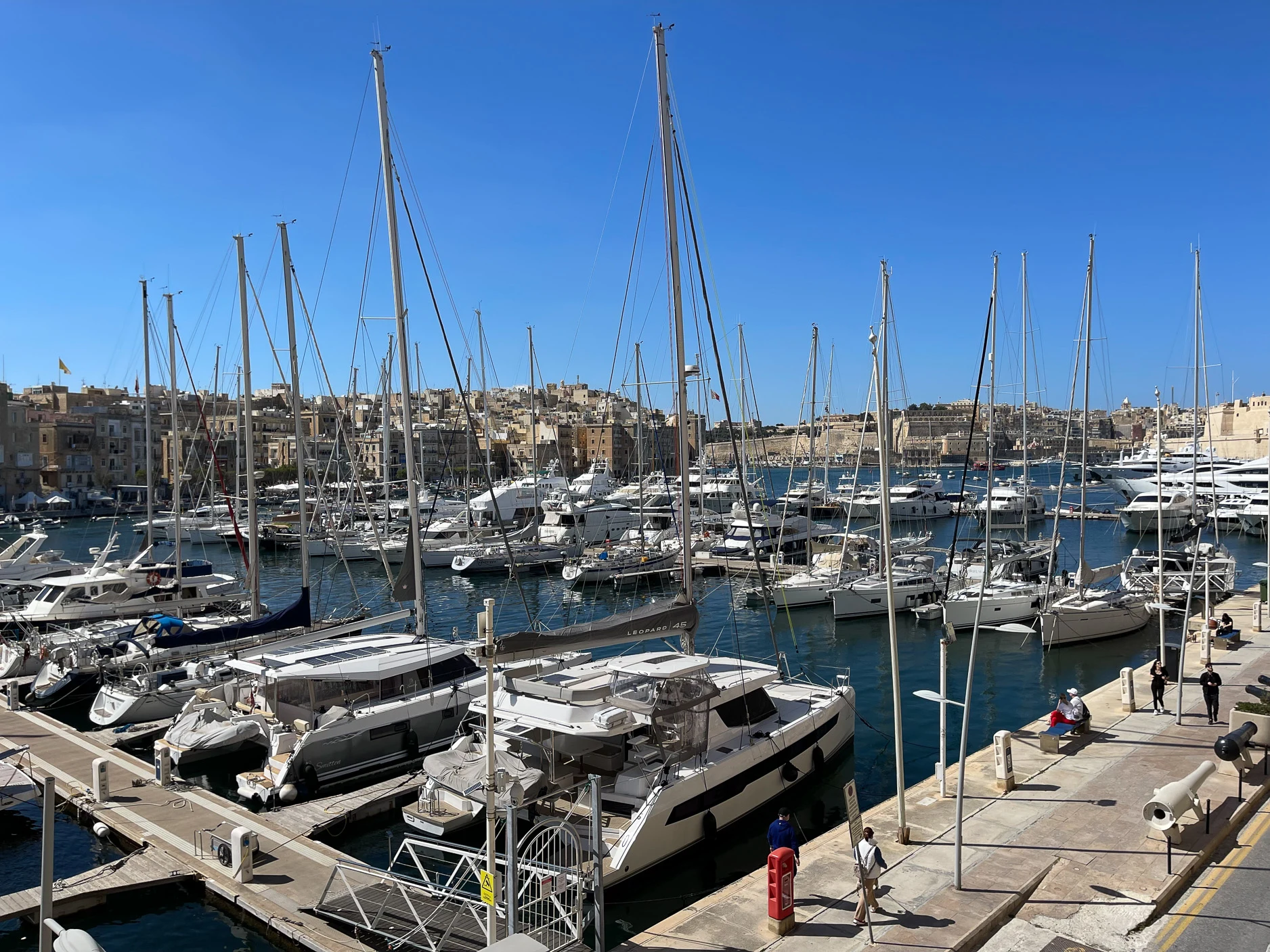
Visiting Birgu / Vittoriosa – Three Cities Malta
Of the Three Cities, Birgu Malta is the one to visit first, as you’ll find most to see and do here. When the Knights Hospitaller from the order of St John made it their capital in 1530, Birgu was little more than a quiet village.
The peninsula was quickly fortified by the Knights of Malta, as they became known, in anticipation of an Ottoman attack. When the Ottomans besieged the city in 1565, the defences held strong, earning Birgu a new name: Città Vittoriosa, meaning Victorious City in Italian.
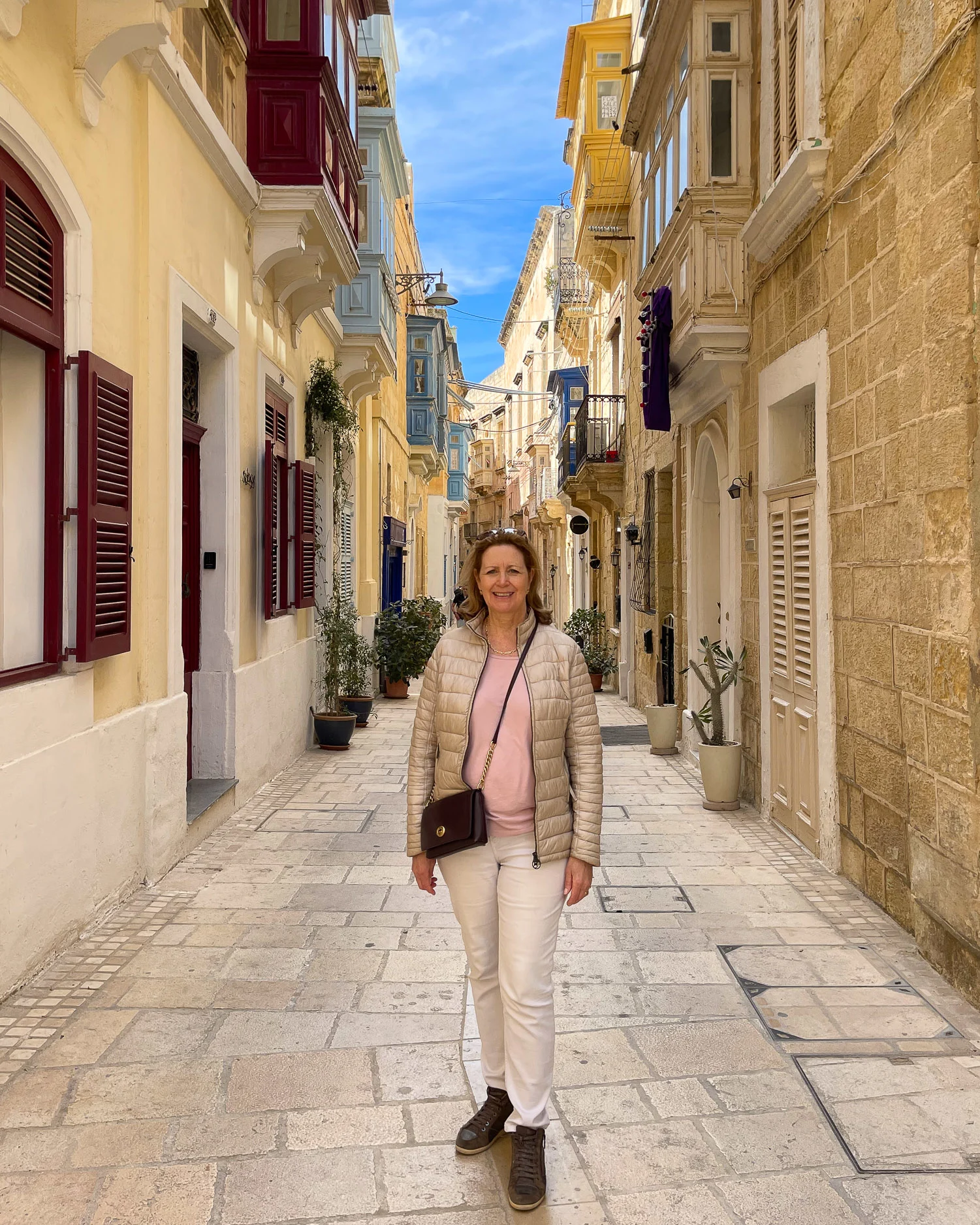
Things to do in Birgu / Vittoriosa
Tour of the grand harbour on a Maltese Dgħajsa
Between Valletta and Birgu, the small Maltese wooden ferries known as Dgħajsa criss cross the harbour. They can take you from Valletta to the Three Cities and back (€2 each way) or offer a tour of the harbour (€8).
We opted for the latter and got a private tour with a local boatman as our guide, taking us around the edge of the harbour and the different inlets of the Three Cities.
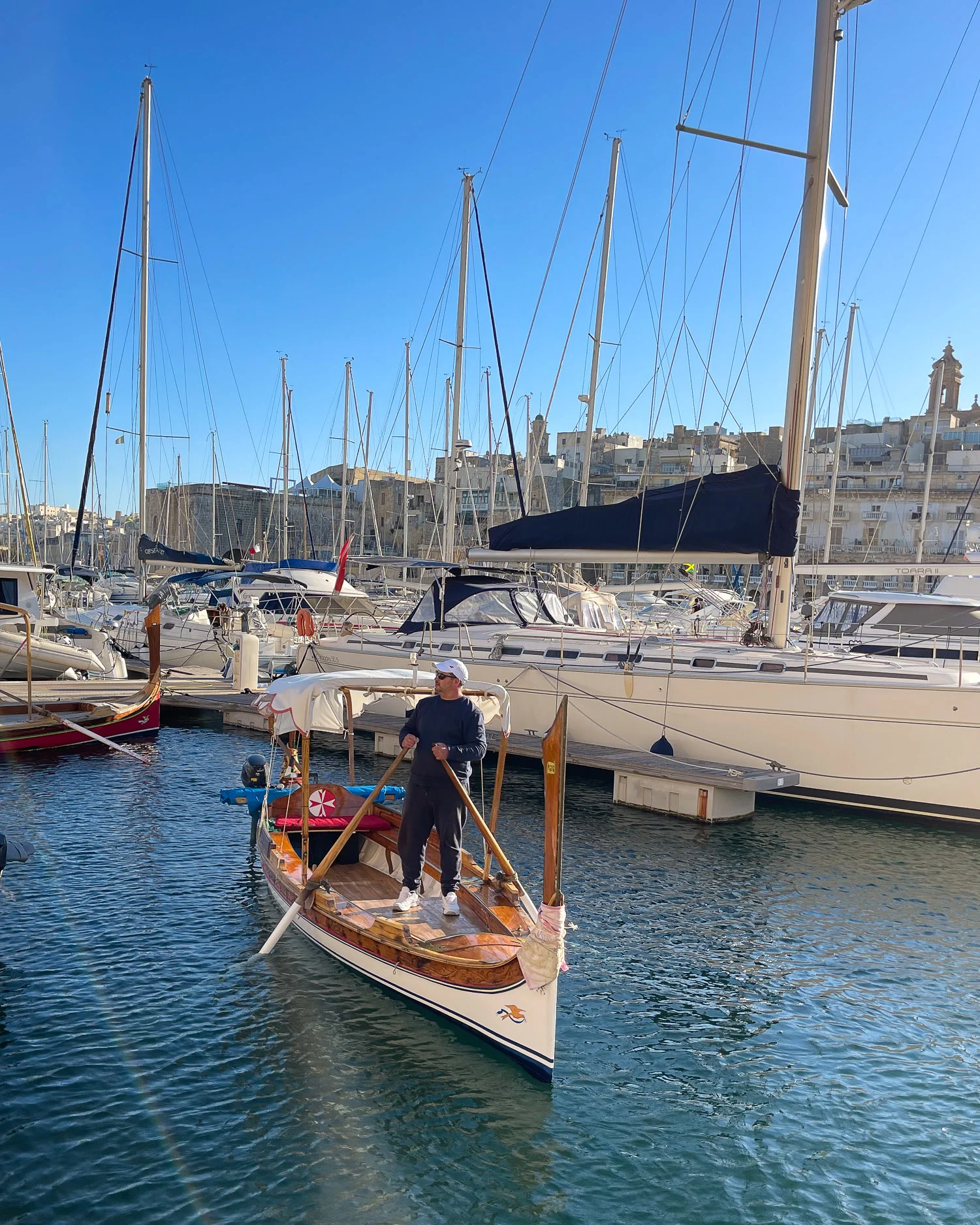
The deep water harbour was the reason that Malta played such a central part in the history of the Mediterranean and why Malta was so intensively bombed during WW2. From 1800, the British used the Grand Harbour as their naval base in the Mediterranean, finally leaving Malta in 1979.
On the Birgu / Vittoriosa side, the ferries run from the archway in front of the Malta Maritime Museum. If coming from Valletta, take the lift from the Upper Barrakka Gardens to the lower level and cross the road to the ferry station.
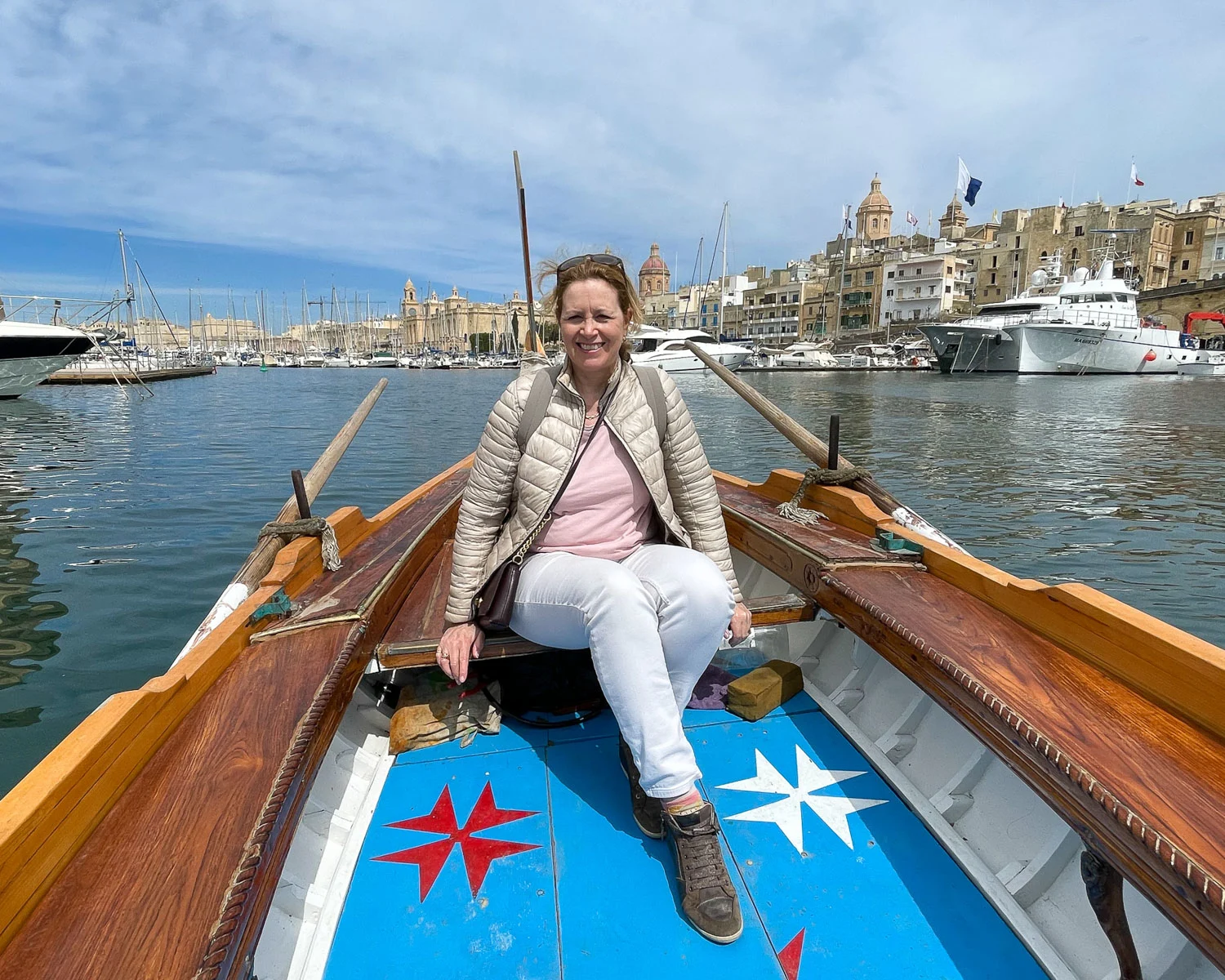
While the price is fixed, each boatman operates independently, so you just need to wait until one arrives and gathers enough passengers. Tell your boatman whether you would like a harbour tour or a crossing to Valletta. The harbour tour takes around 30 minutes but you can see a lot in quite a short time.
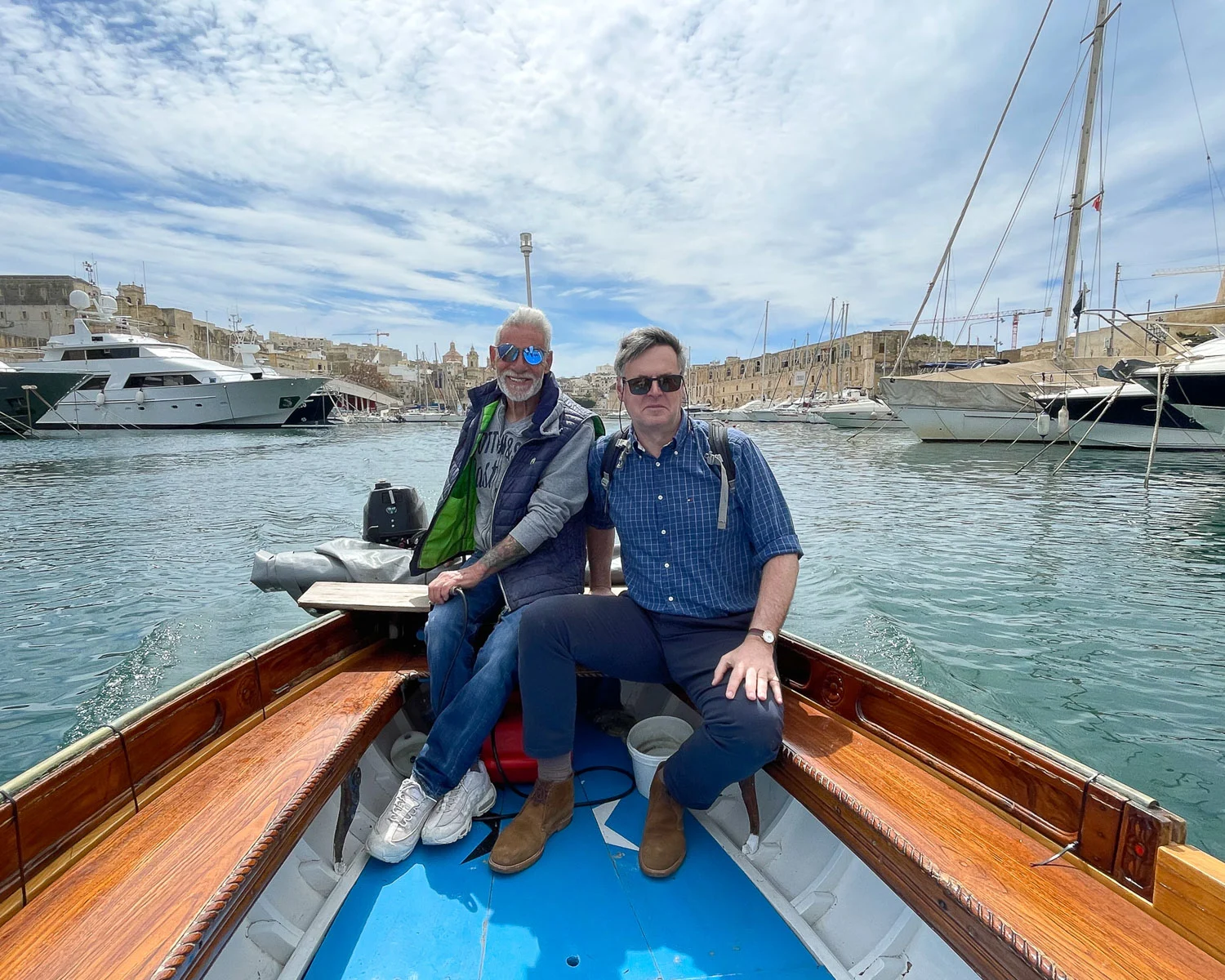
Birgu – Marina and waterfront
When arriving in Birgu from Valletta, the dgħajsa will drop you off right at the waterfront. Lining either side of the inlet between Birgu and Senglea is a marina full of boats, with luxurious super yachts moored on the western side.
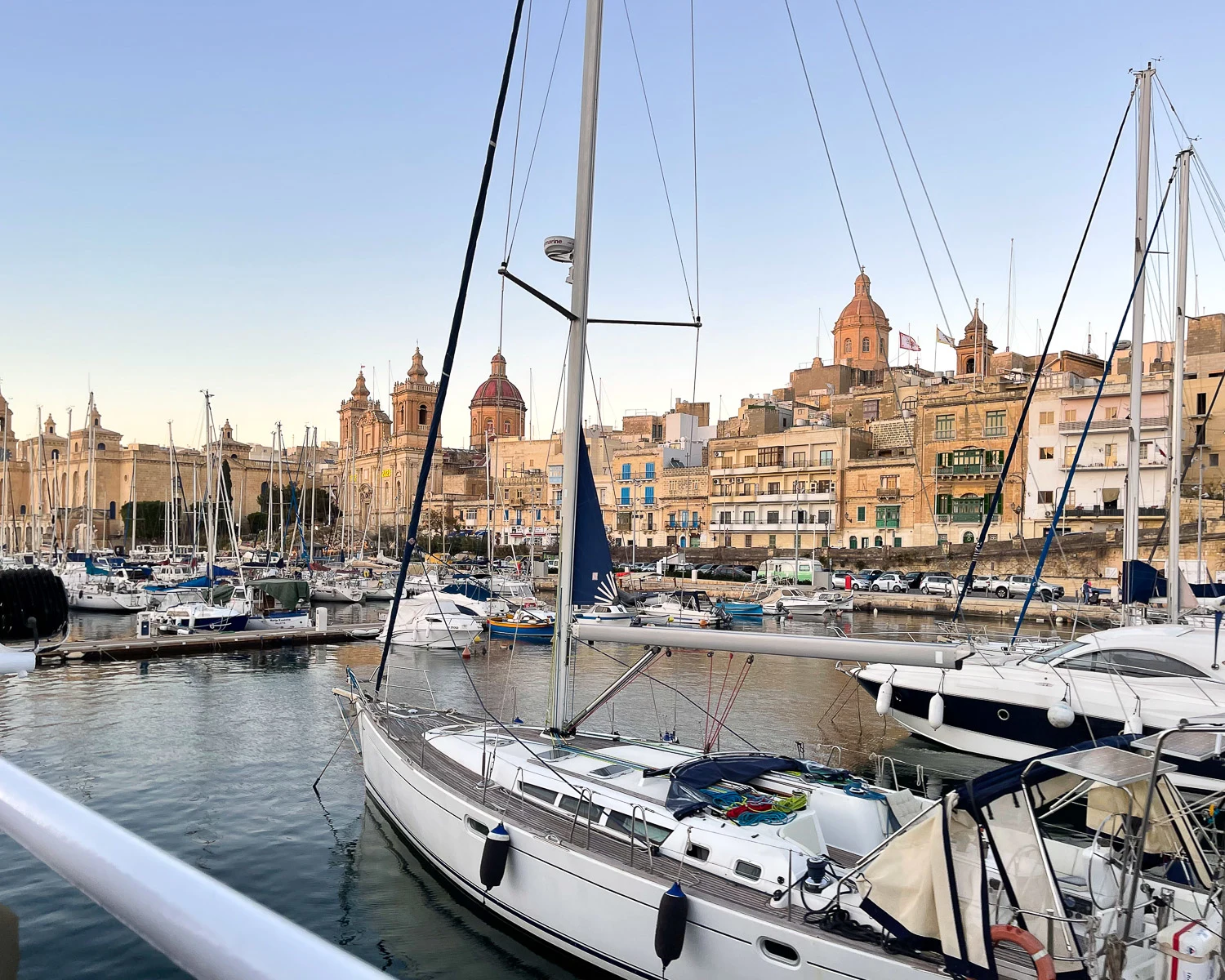
Aside from being a picturesque sight to see, it’s a good place to stop for lunch in one of the many restaurants along the waterfront. There are also a handful of places to visit right on the waterfront, such as St Lawrence’s Church, The Malta Maritime Museum and the Freedom Monument.
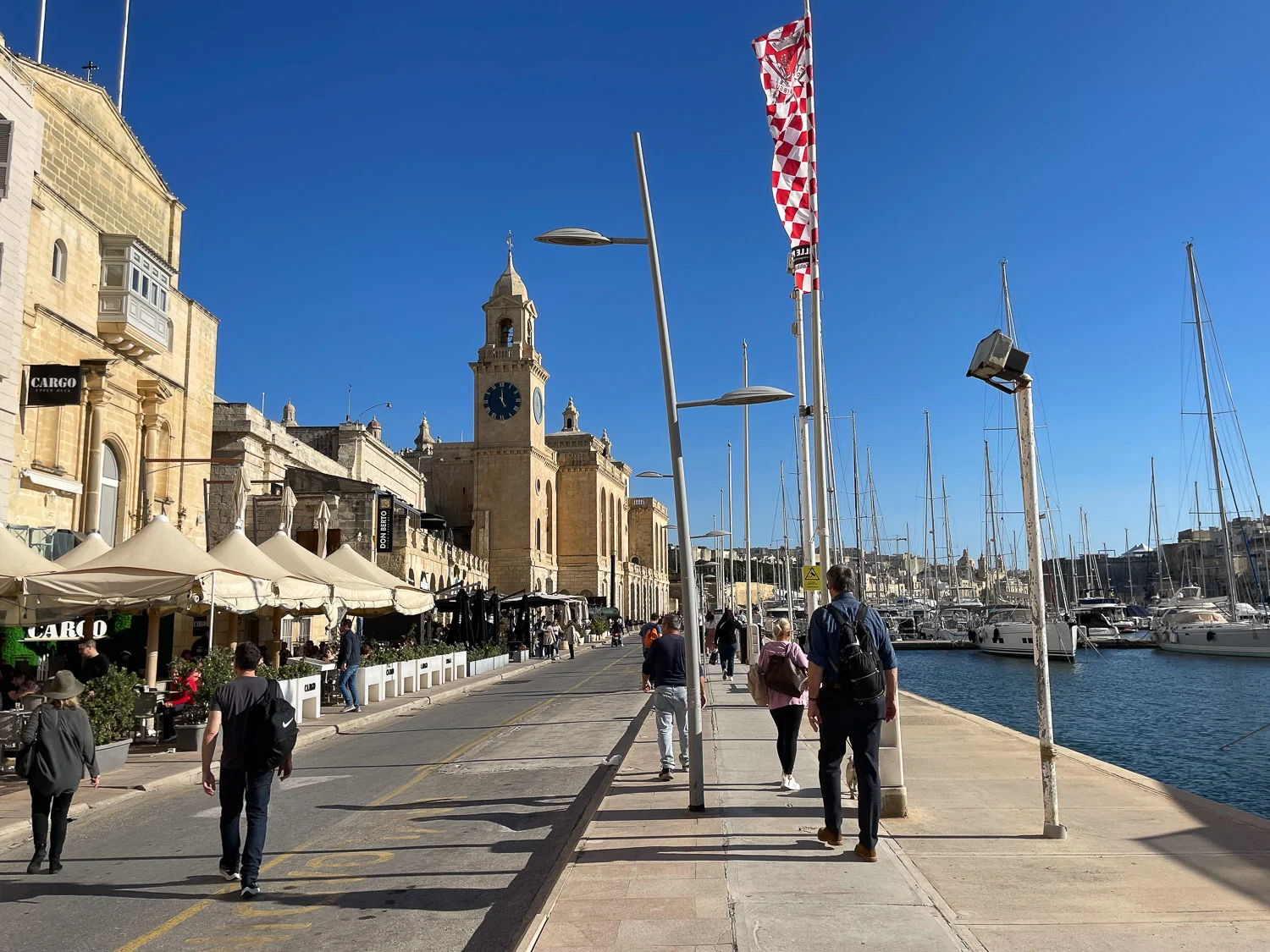
Birgu – Malta Maritime Museum
The Malta Maritime Museum is undergoing redevelopment but is partially open for special exhibitions. It is housed within the former Royal Naval Bakery that supplied food to the Mediterranean fleet in times of war.
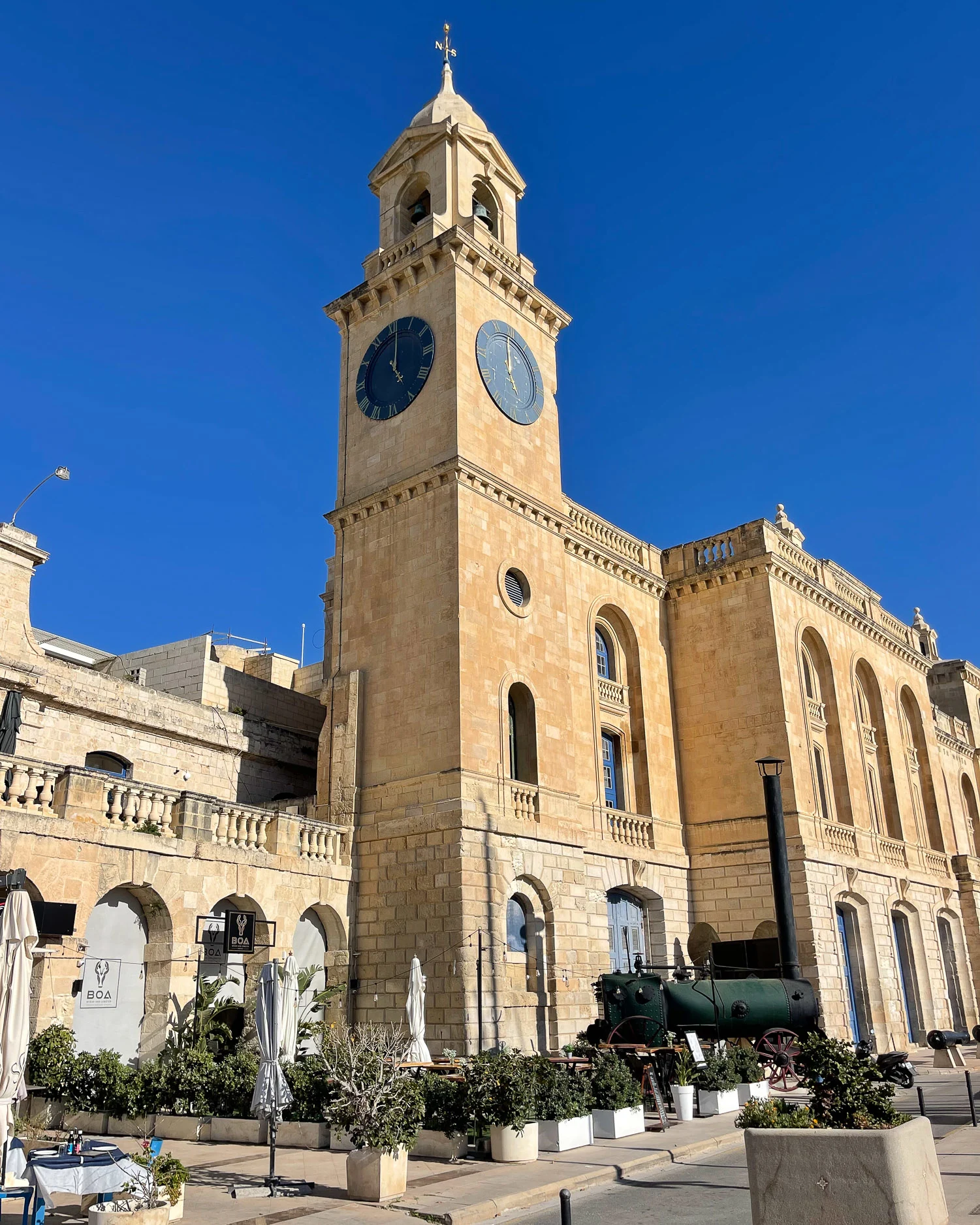
Converted into a museum in the early nineties, this is the largest museum on the island and contains over 20,000 artefacts, scale ship models, and even a genuine steam engine from the 1950s. Among its better-known pieces on display is the world’s largest Roman anchor and the figurehead of a Napoleonic ship.
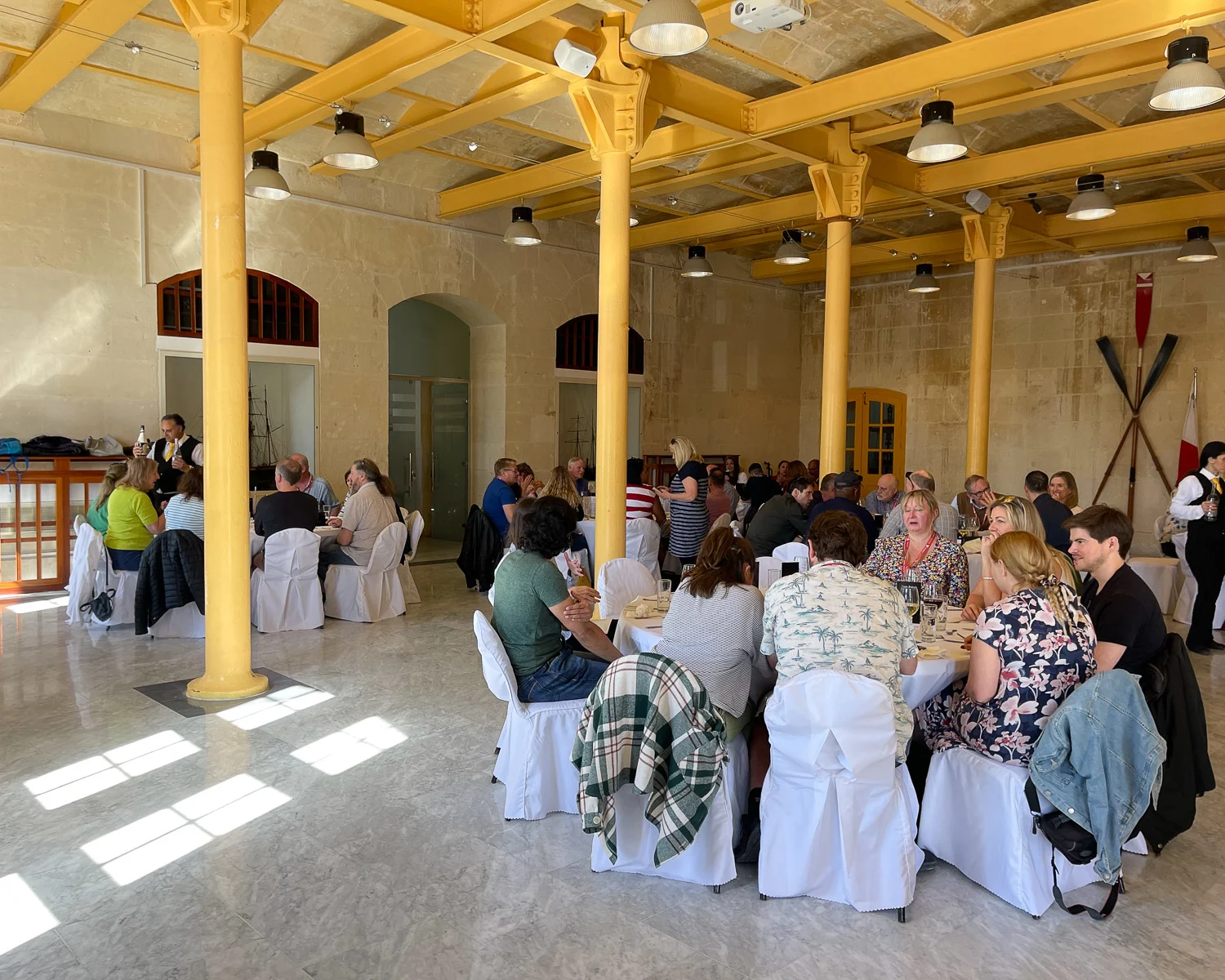
Birgu – Victory Square
A short walk from the waterfront behind St Lawrence Church, you’ll find Victory Square, the city’s main square. It was given its name following the defeat of Ottoman forces during the Great Siege. The statue in the centre commemorates the victory, though the medieval clock tower that once dominated the square was destroyed during WWII.
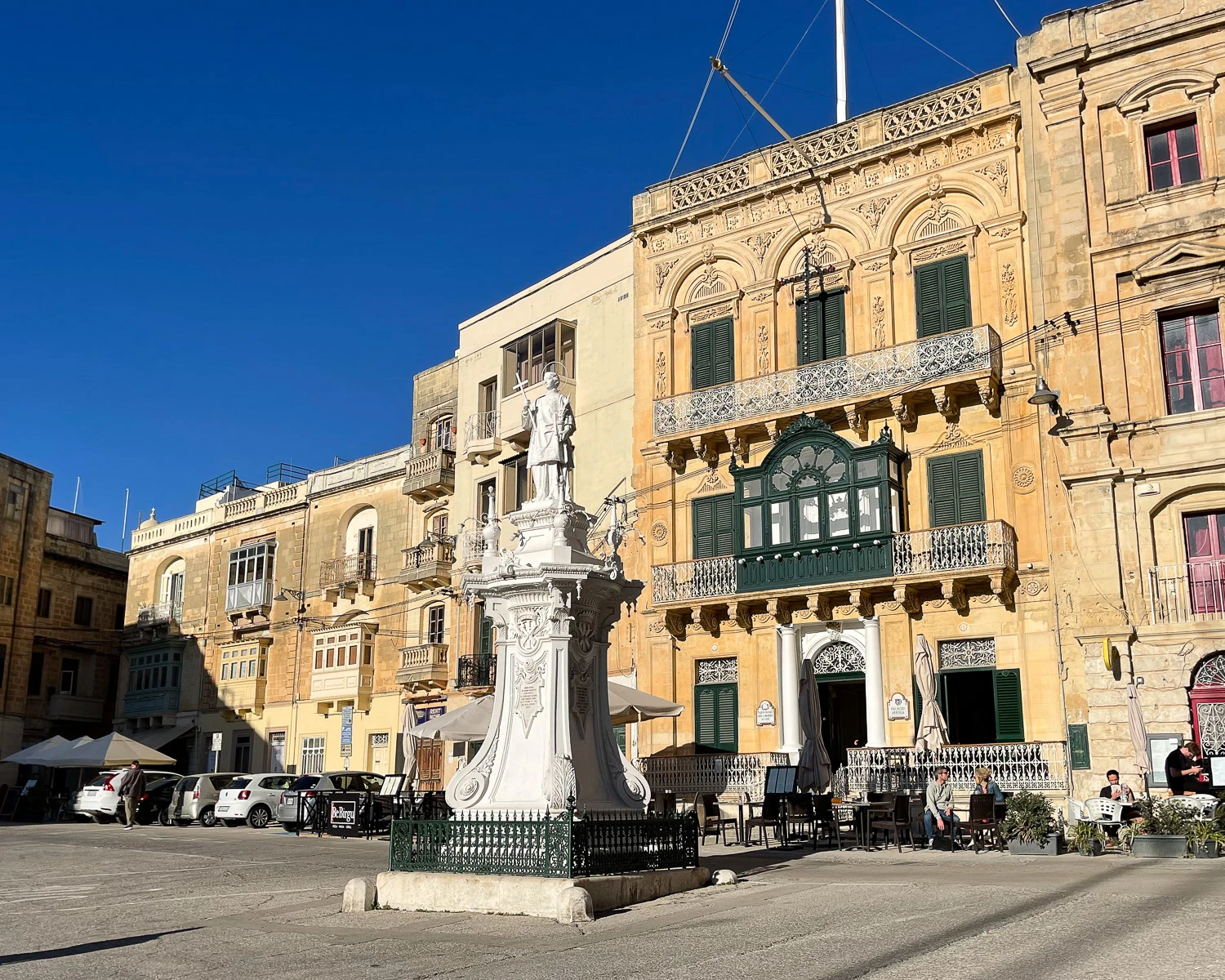
In Victory square are several cafes which are an ideal place for lunch, the best known of which is BeBirgu. Set in an old Palazzo, an imposing exterior gives way to a delightful internal courtyard, complete with a fountain. It’s also the home of the St Lawrence Band Club, with a somewhat incongruous room of pool tables at the back of the cafe.
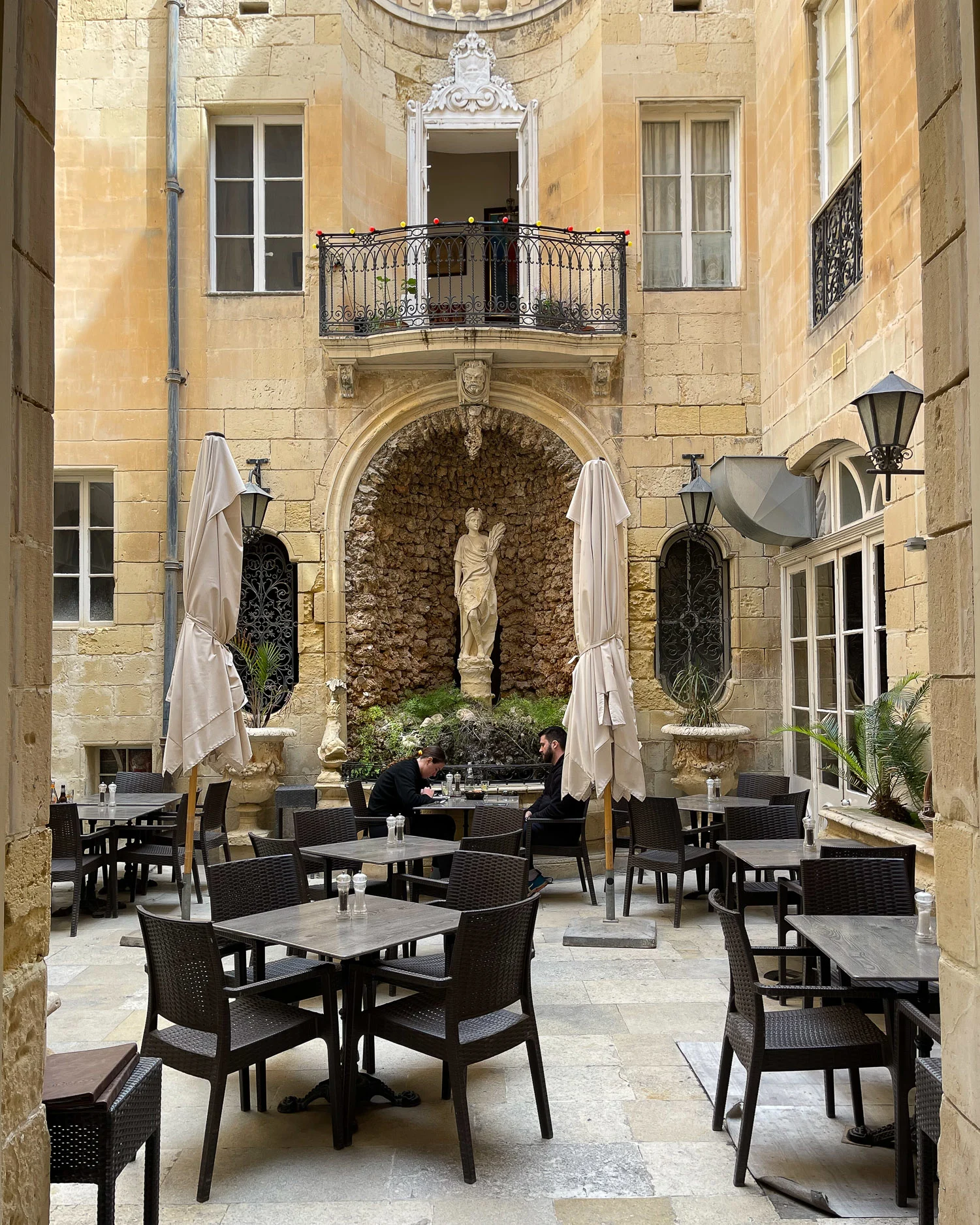
Birgu – St Lawrence’s Church
Trace your steps back a minute or two before you reached Victory Square, and you’ll find St Lawrence’s Church. Vittoriosa is one of the oldest parishes on the island, and the church was used as the main place of worship for the Knights of Malta, before they moved their headquarters to Valletta.
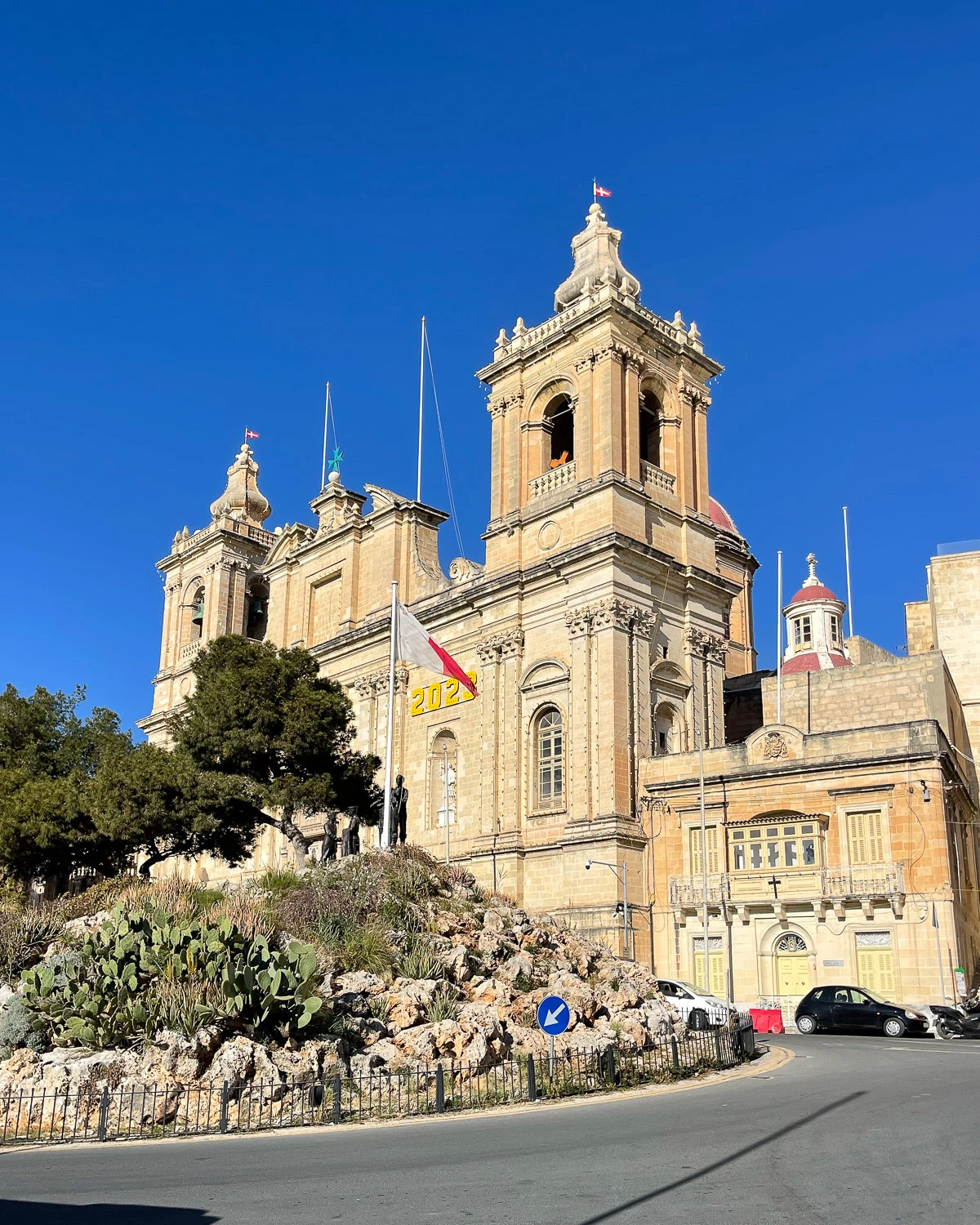
St Lawrence’s church was built by one of Malta’s most famous architects, Lorenzo Gafa, in the traditional Baroque style. The interior is intricately detailed and contains many works of art as well as a large marble cross. The church is open daily, and just a short walk up the hill is the Vittoriosa Church Museum, open 9:30 to noon every day.
If you happen to be visiting in August, look out for the fiesta that is held for the feast of St Lawrence, with brass band and parades through the streets.
Birgu – wander through the old streets
From Victory Square it’s fun to wander through Birgu’s narrow, medieval streets and feel you’ve stepped back hundreds of years into the past. Although the roads are mainly pedestrianised, watch out for the occasional car passing by.
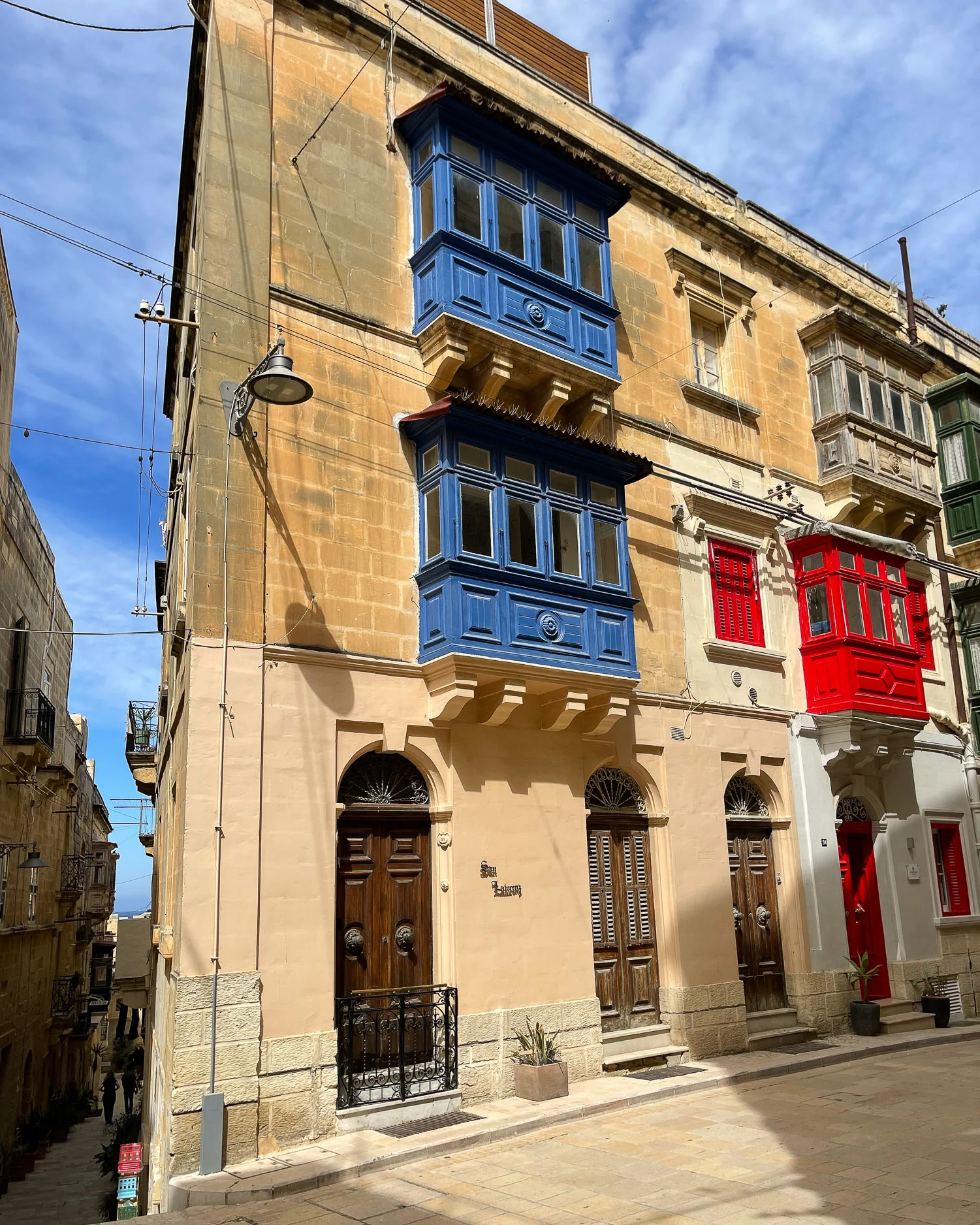
While wandering, take notice of the architecture, particularly the Arabic-style gallarija: ornate closed balconies, often painted in bright colours, that appear to be late additions to the stone buildings.
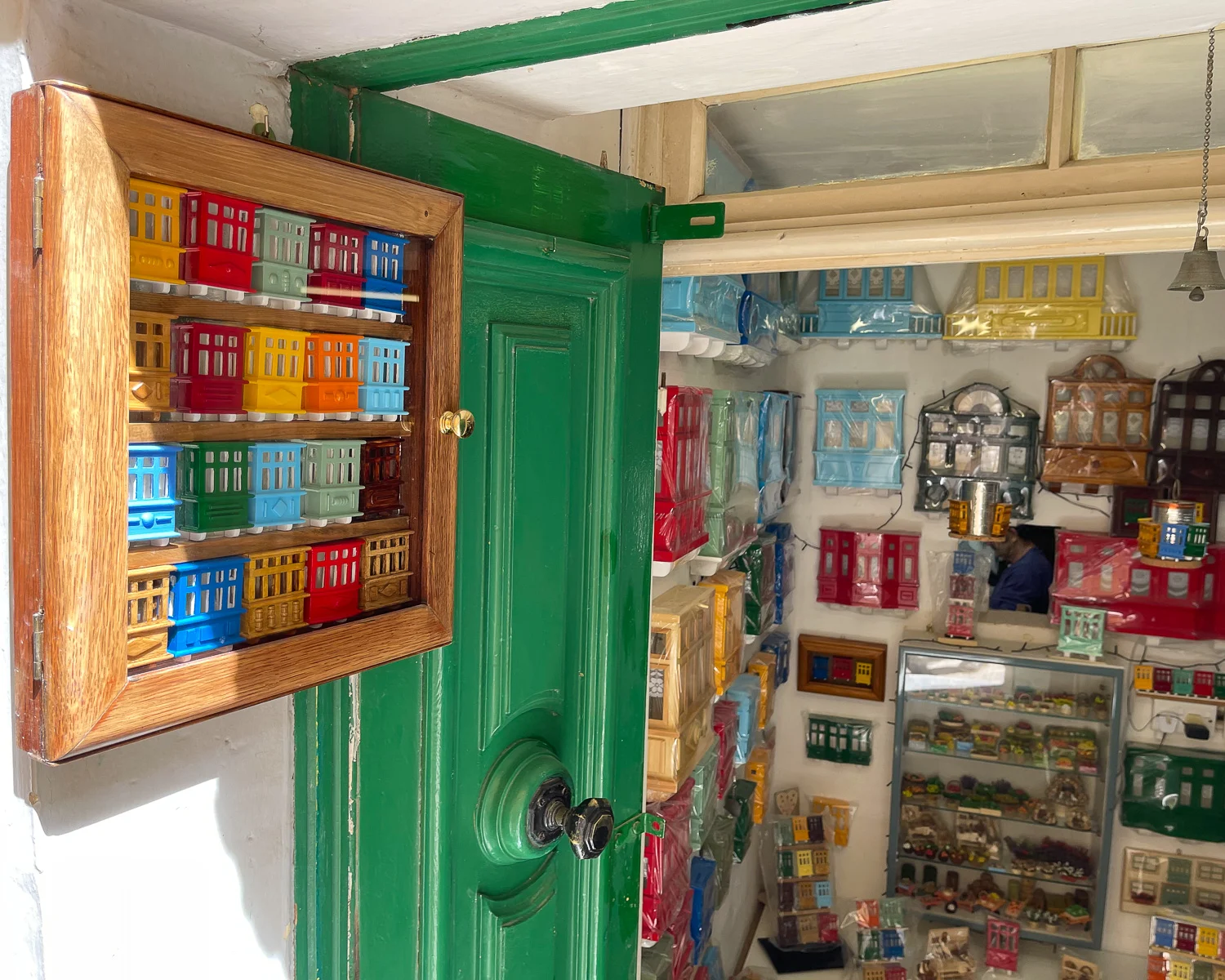
Look out for the auberges, elegant mansions used as lodging and headquarters by different branches of the Knights of Malta. The two best-known ones in Birgu are the Auberge d’Auvergne and Provence and the Auberge d’Angleterre, built to house the French and English langues of the Knights Hospitaller.
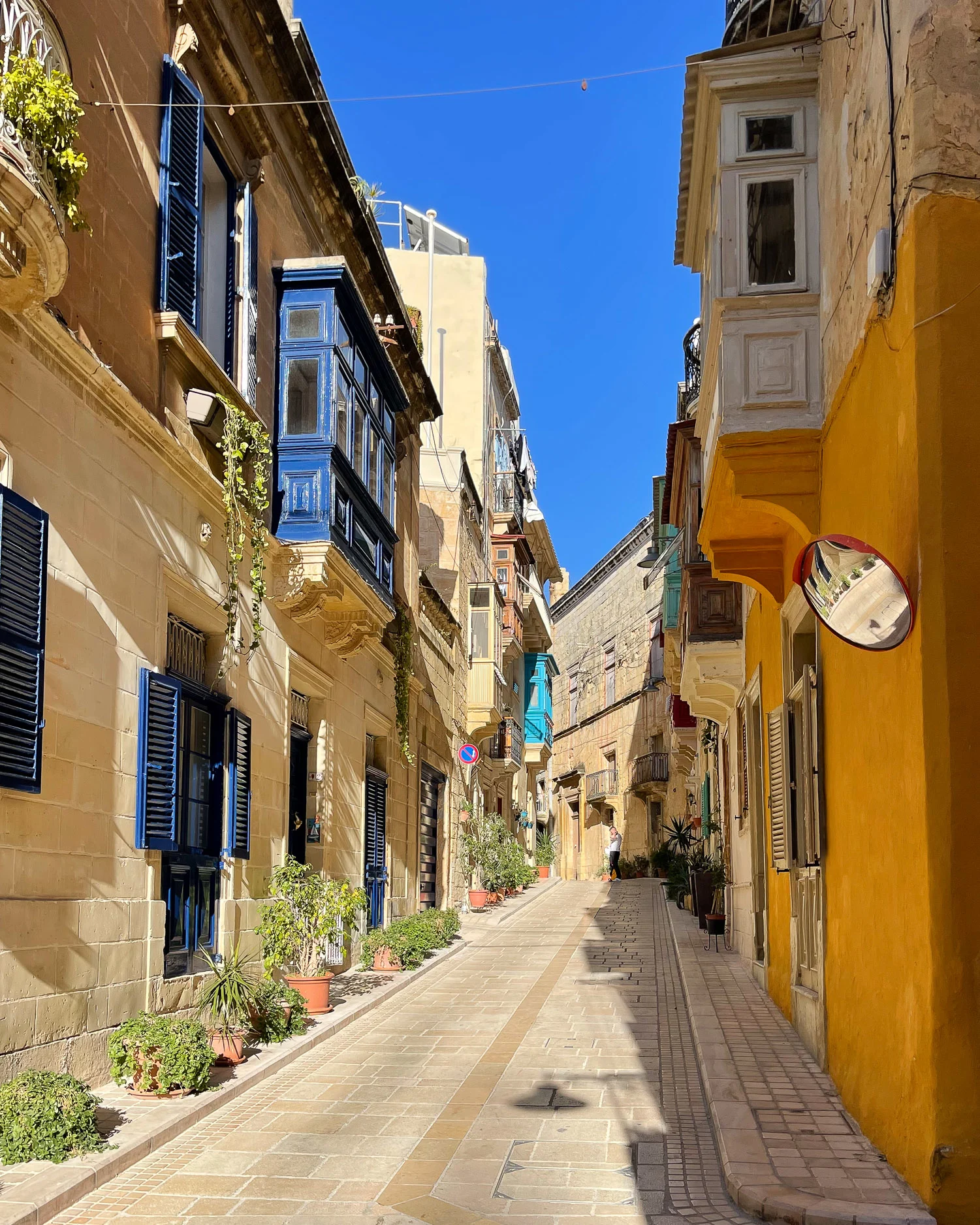
Turn up a narrow lane to find the Sicolo Norman House, said to be the oldest house in Birgu. The owner is in the process of restoring it and you can have a look around to see how life would have been lived in the 12th century.
Only a few steps around the corner from the house is Birgu Blue, a little blue-façade atelier selling leather bags and handmade goods from independent artisans.
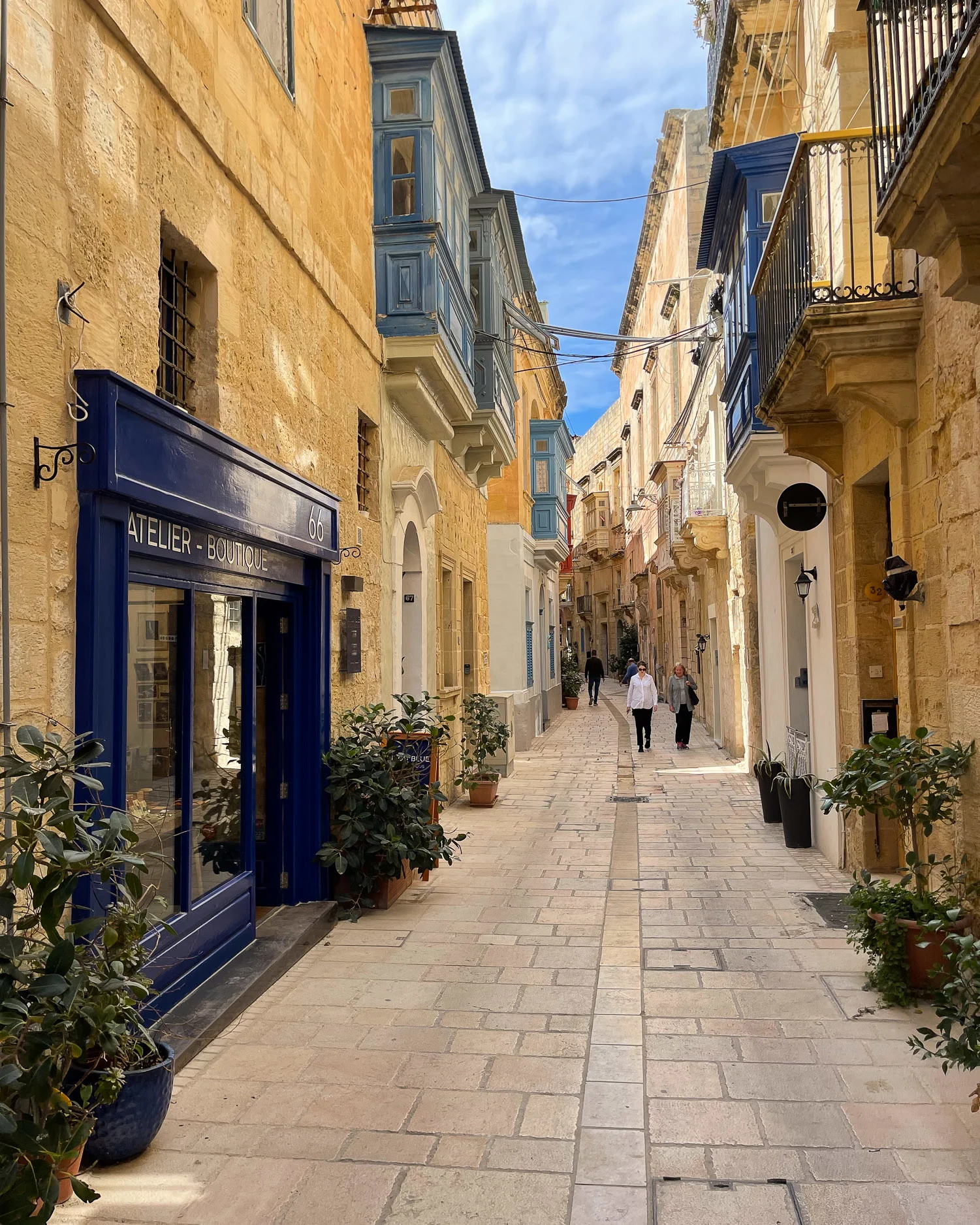
Birgu – The Inquisitor’s Palace
Follow the street from St Lawrence’s Church, and you’ll come upon a large, but somewhat unassuming, stone building. An understated doorway and small banner on the facade are the only identifiers of the Inquisitor’s Palace. This 16th-century palace was originally built as the residence of the Inquisitor who acted as representative of the Pope and judge in matters of Catholic faith.
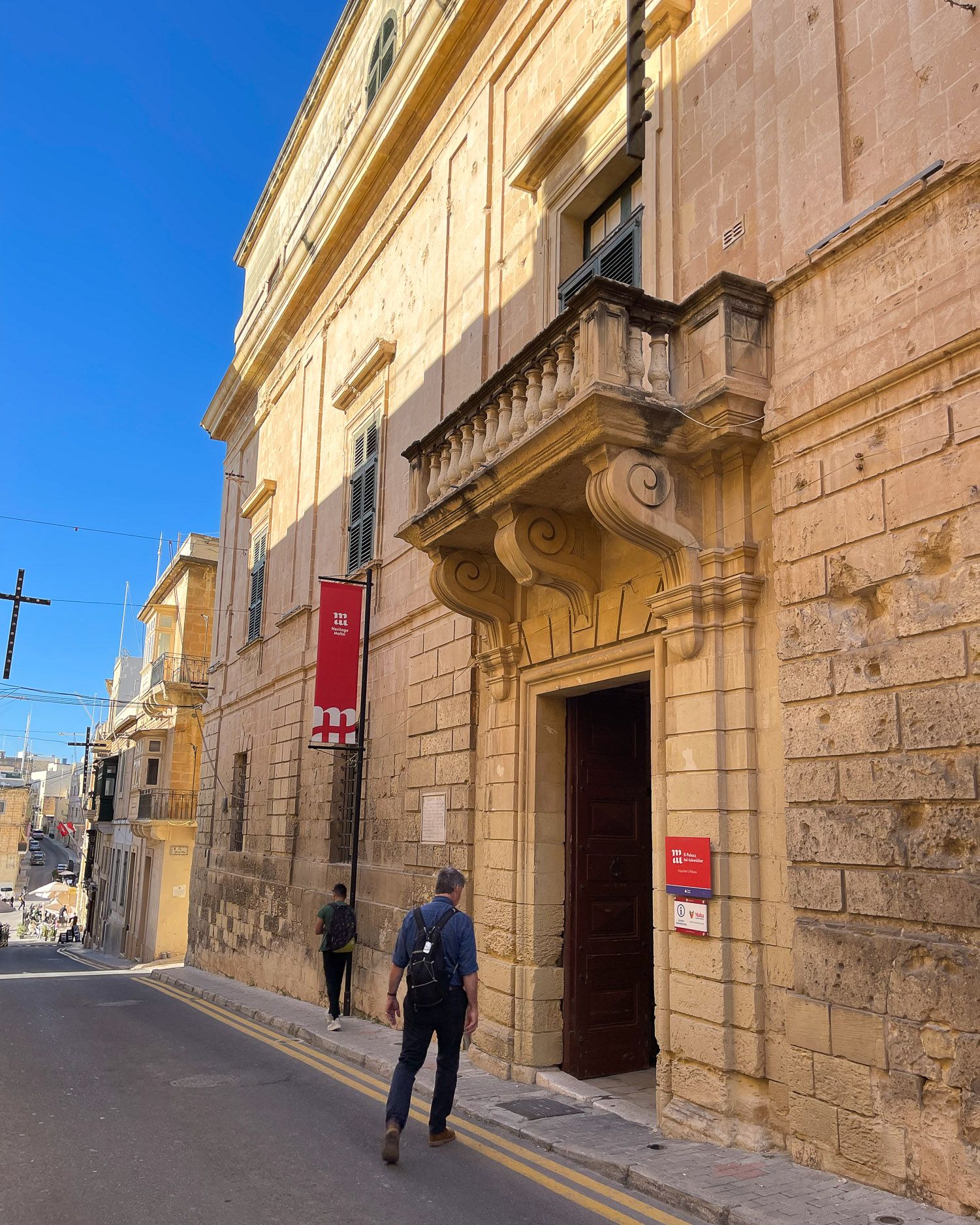
Built in the 1530s, the Inquisitor’s Palace has been many things over its lifetime. After the French occupation in 1798, the Inquisition was abolished and the palace served as a military hospital, a convent and even a dining facility for boarders.
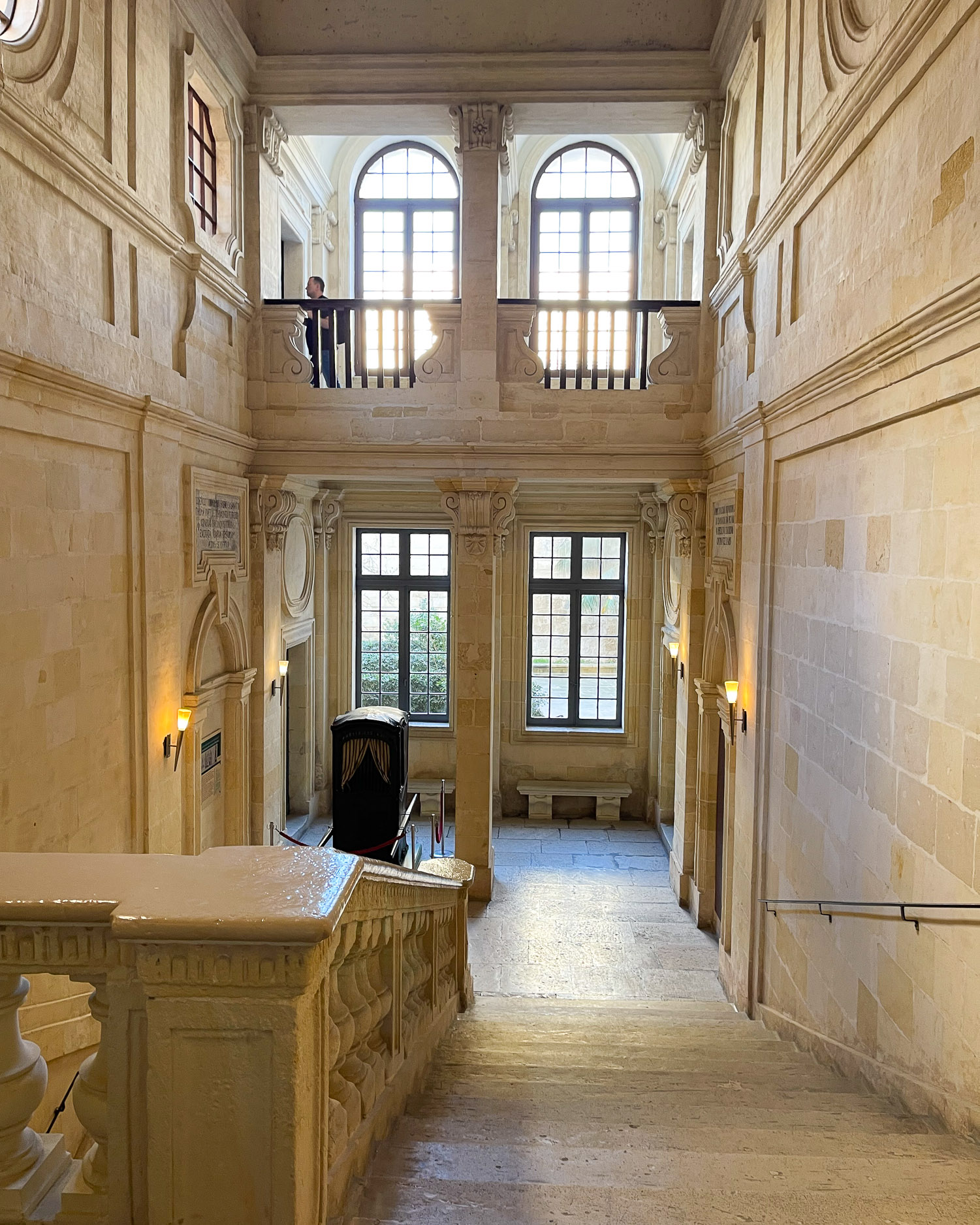
Today, it is both historic Palazzo and National Museum of Ethnography. Visitors can wander through the grand staircases and reception rooms, as well as the private bedrooms and domestic kitchen used by the inquisitor and his household. Exhibits highlight the importance of the Catholic faith in Maltese society.
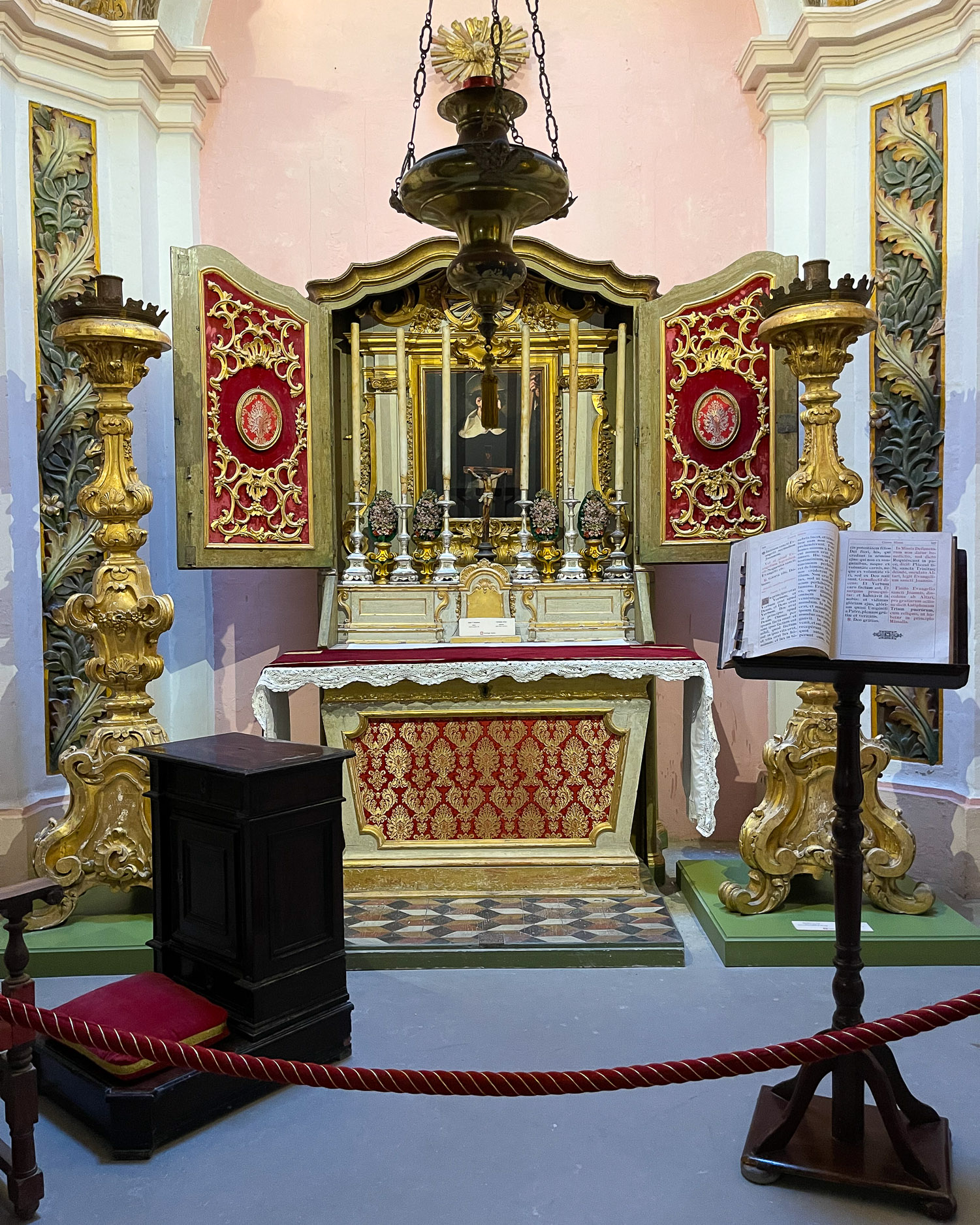
A panelled tribunal chamber, prison cells and torture chamber can also be seen, relating to the Inquisitor’s office in the prosecution of heretics.
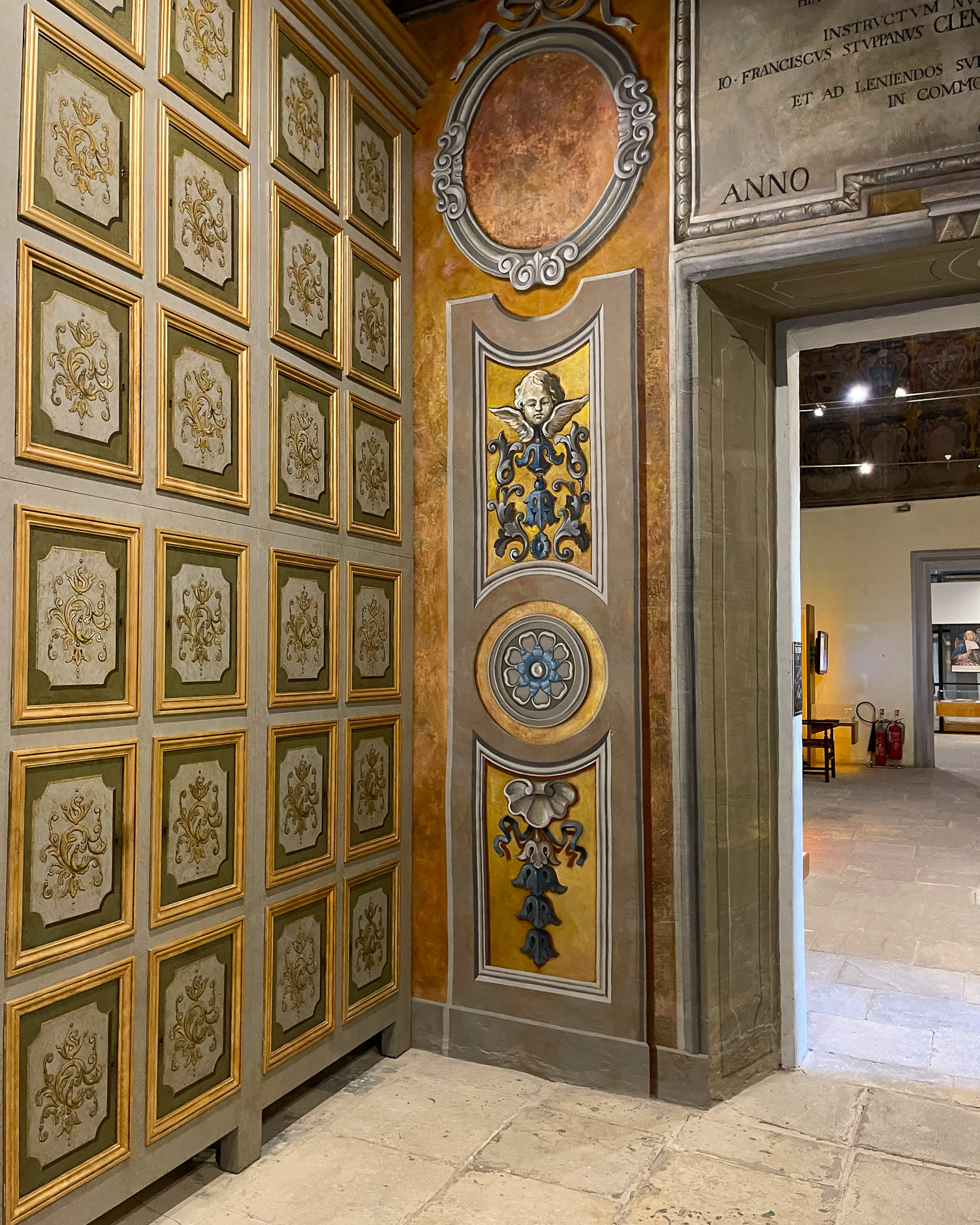
The interiors alone make the palace worth a visit, with airy halls, stone archways and faded remains of colourful frescoes on the walls and ceiling.
Birgu – Fort St Angelo
One of Birgu’s most famous sights is the large bastion at the tip of the peninsula that extends into the Grand Harbour. Originally a medieval castle, Fort St Angelo was rebuilt as a fortress by the Knights of Saint John in preparation for expected Ottoman attack.
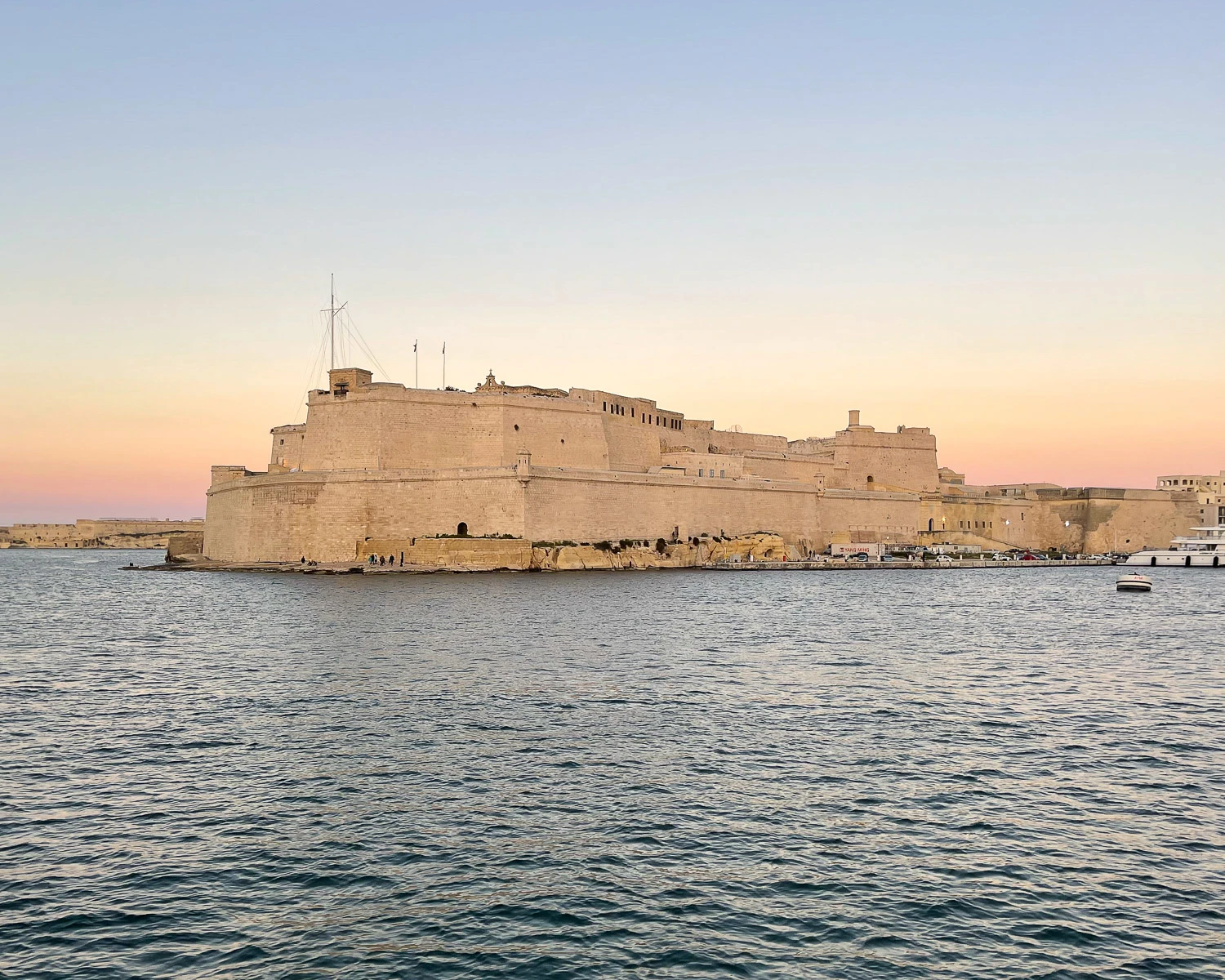
Fort St Angelo served as the Knights of Malta’s stronghold during Malta’s Great Siege of 1565, and is still in use today as a headquarters for the order’s humanitarian work. Later the fort became the garrison of the British Navy. During WW2 it was renamed HMS St Angelo and used as the navy’s base ship until 1979, when the British fleet left the Grand Harbour.
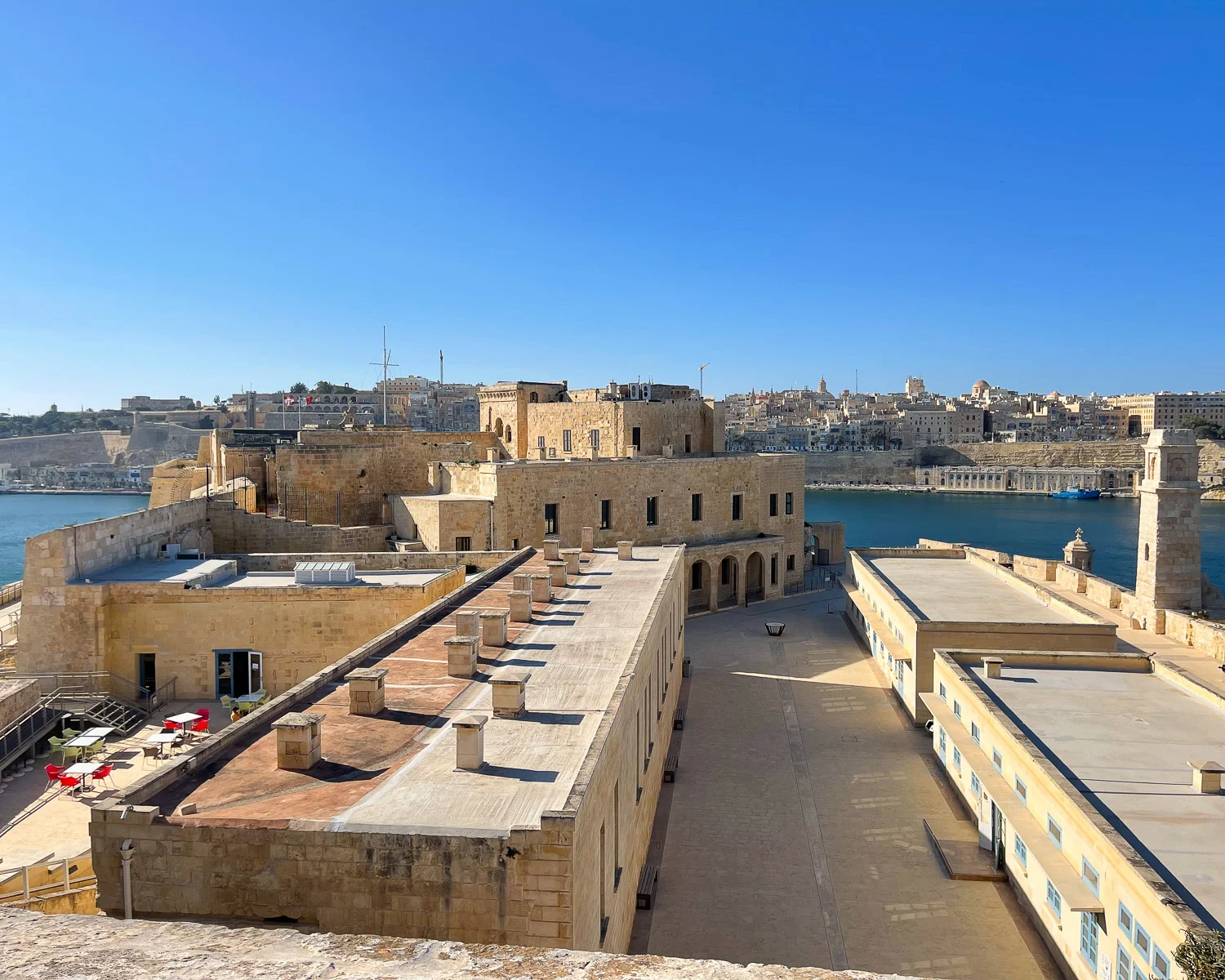
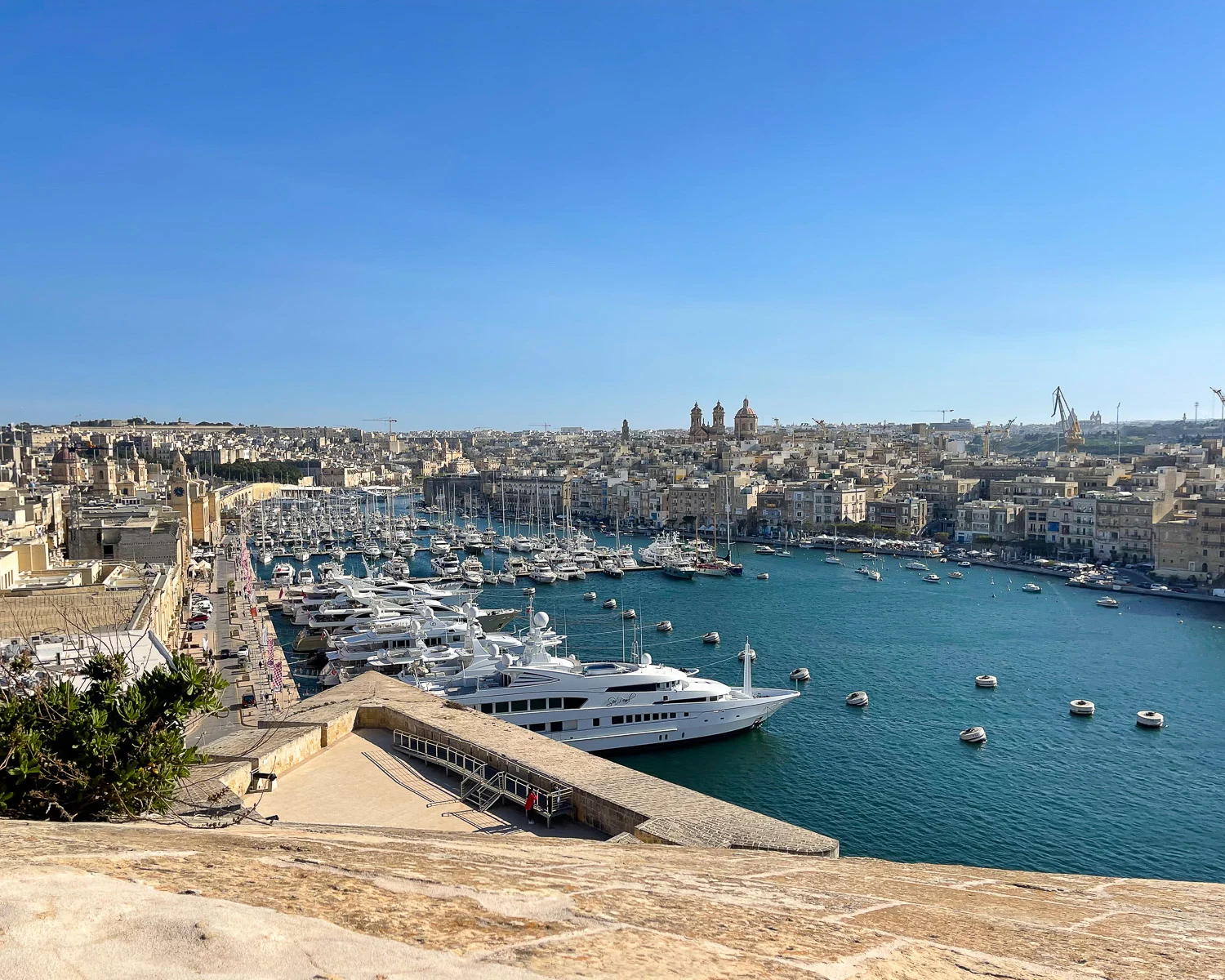
The fort is built on a higher elevation than its surroundings, with stunning panoramic views of Valletta as well as the nearby peninsulas of Kalkara and Senglea. There’s plenty to see, with audiovisual presentations about Malta’s naval history, recreations of the soldier’s barracks and the officer’s quarters and chapel.
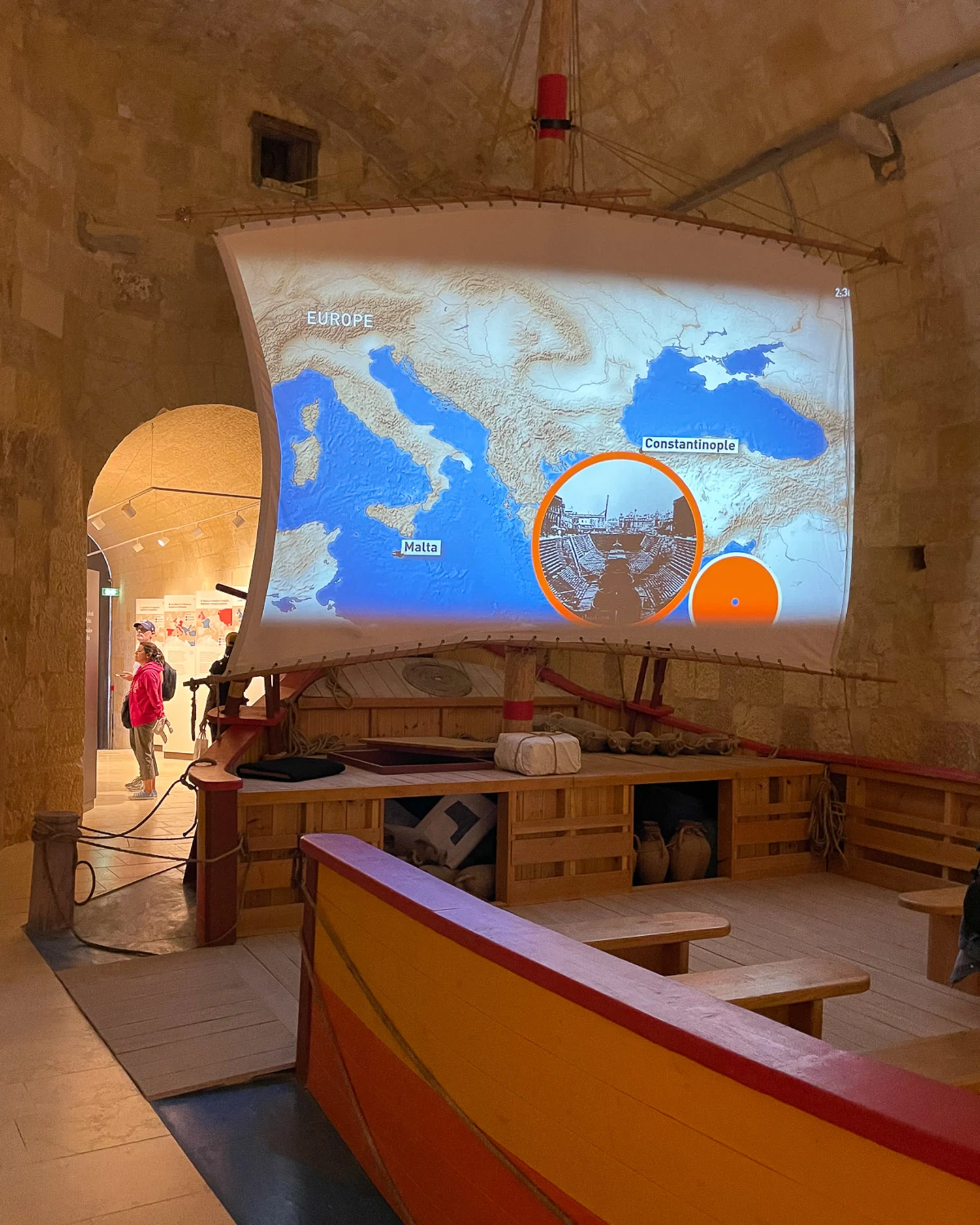
Tunnels and dungeons of the fort were used as film locations in the TV show Game of Thrones. The fort is open for visitors daily, costs €10 to enter, and you should allow 2-3 hours for a visit, with more information on the website.
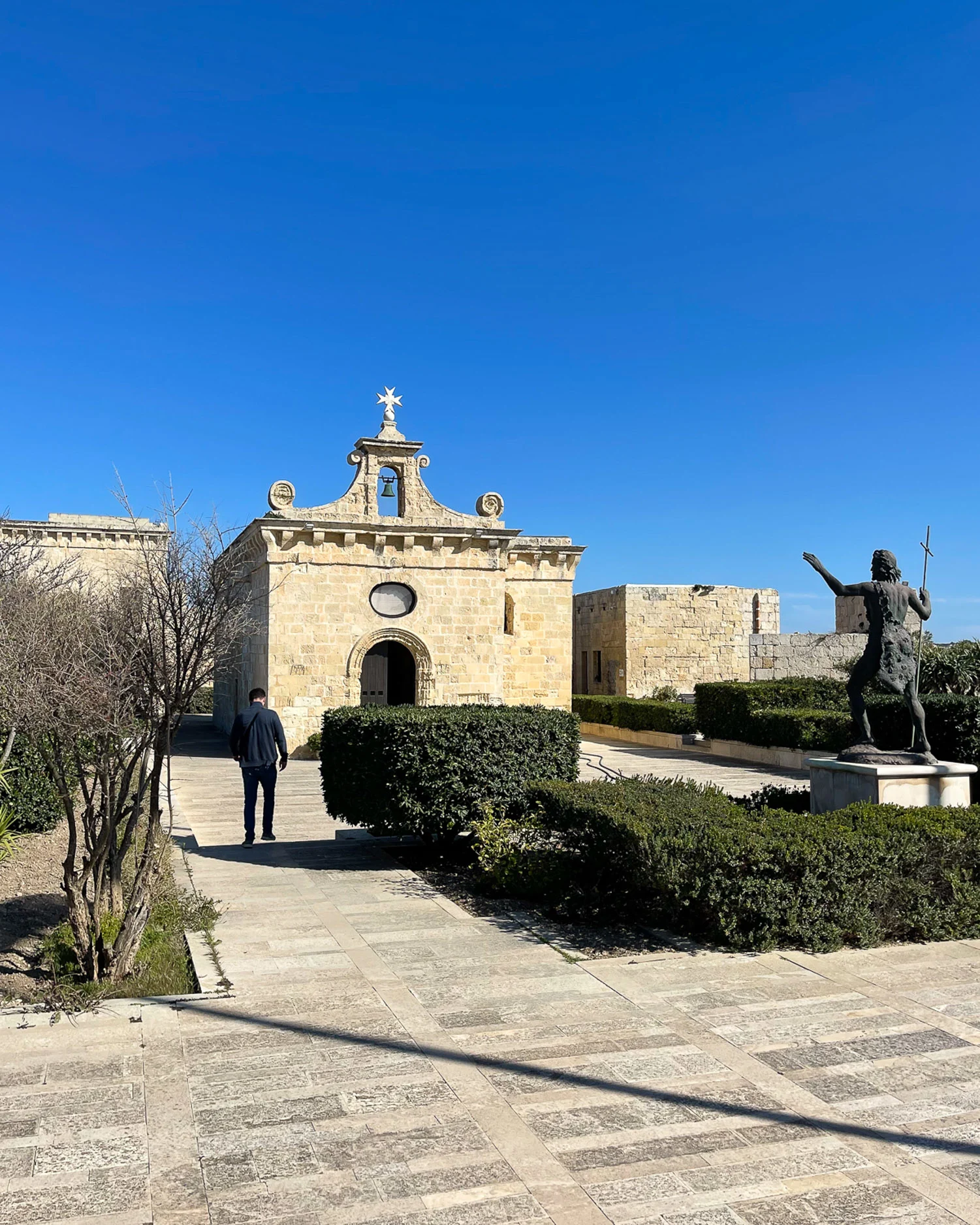
Birgu – City gates
Most of Birgu’s fortifications built by the Knights of Malta still remain, as do three out of four of the original city gates, which were built in the 1720s.
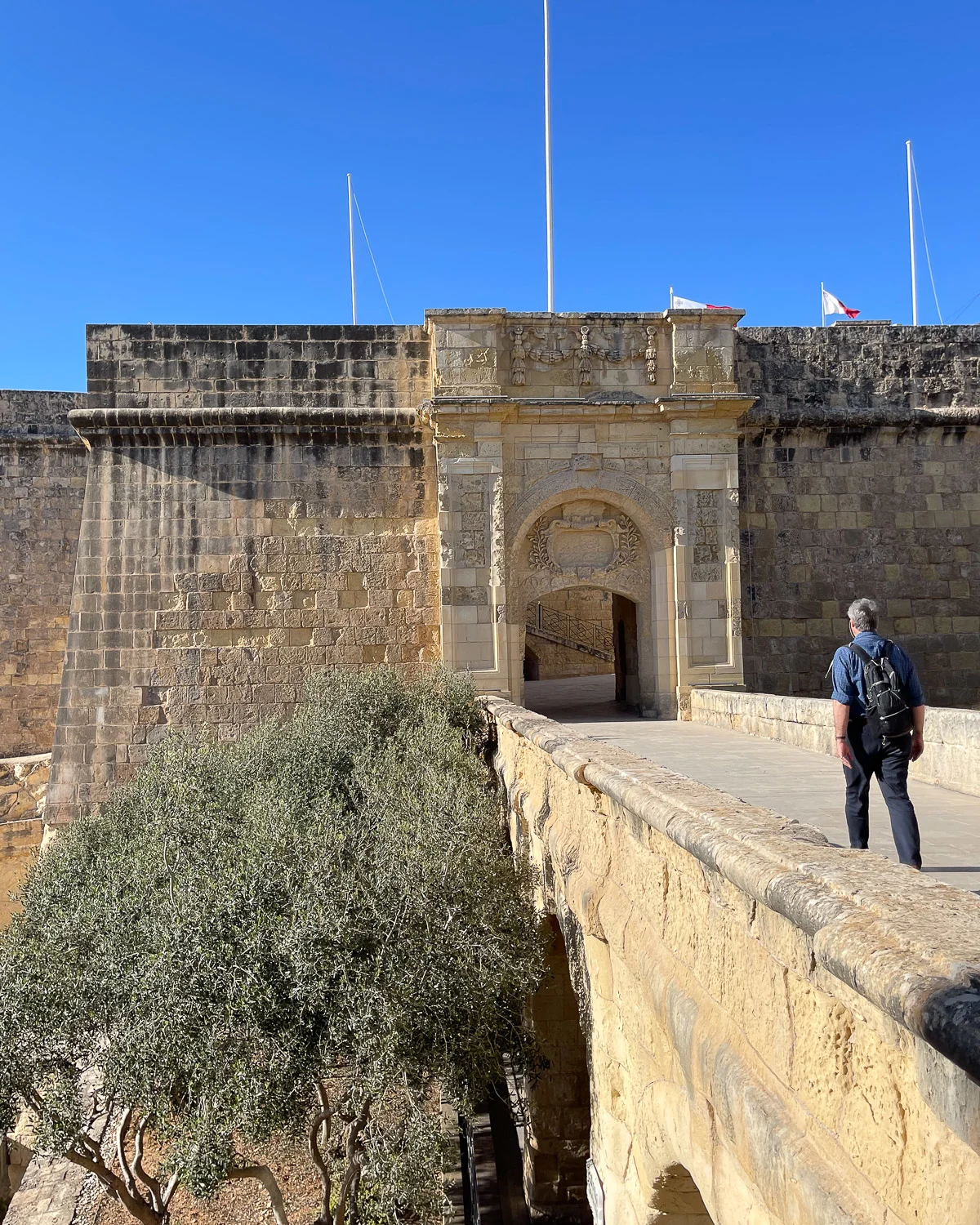
These gates were built in Baroque style, each following on from the next and providing entrance to the city of Vittoriosa. Three that remain are the Couvre Porte Gate, the Advanced Gate, and the Gate of Provence. The fourth, the Porta Marina, was destroyed in an explosion in the early 1800s.
If arriving in Birgu by bus, the city gates would be the best place to start your walking tour of Birgu, leading past the Malta at War museum and on towards the Inquisitor’s Palace.
Nearby is held the Birgu market, with a flea market on Sundays, and general market on Tuesdays, but you need to arrive early in the morning as the stalls are normally packed away by 12.00.
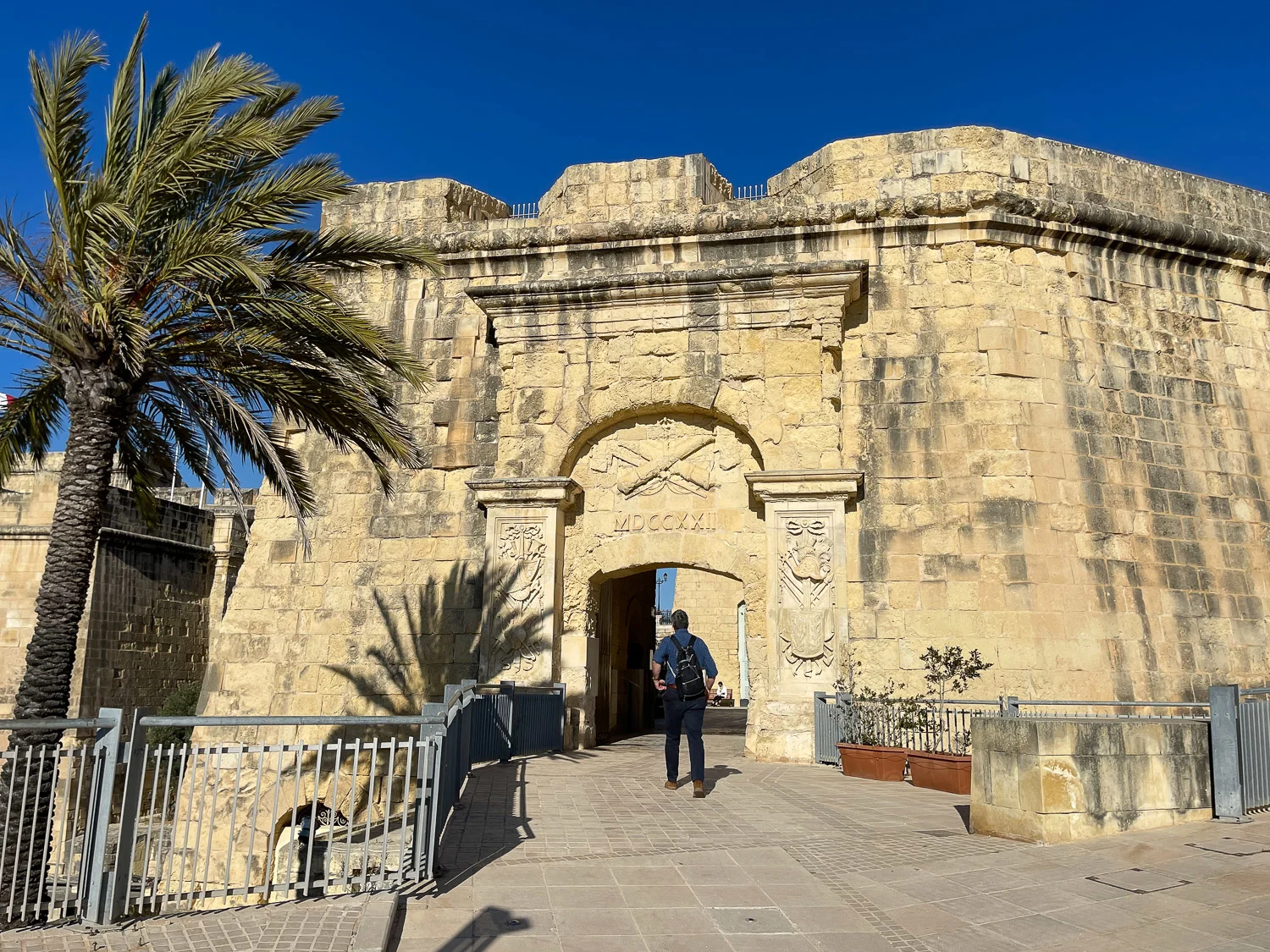
You may also enjoy our article – 20 things to do in Valletta Malta
Birgu – Malta at War museum
If you walk through the Gate of Provence, you will be steps away from the Malta at War Museum, which commemorates Malta’s role in the Second World War. It’s quite fitting that the building housing the museum was once an army barracks and an air-raid shelter. Today it serves as a reminder of what the people of Malta endured in WW2.
The museum is full of wartime memorabilia like uniforms, medals and weapons. You can even get a guided tour down into the rock-dug tunnels that served as the air raid shelter during the war. The museum is open daily and tickets are €14.
Where to stay in the Three Cities Malta
Staying in the Three Cities is an excellent option for those who enjoy being surrounded by history. The connections by ferry are quick to Valletta on the other side of the Grand Harbour, and from Valletta buses will take you to anywhere in Malta. Accommodation in the Three Cities also has the benefit of being a bit cheaper than Valletta.
If you are wondering where to stay in Three Cities Malta, I’d recommend either Birgu / Vittoriosa, which has most of the attractions or Senglea / Isla where there is a public ferry that runs every half an hour to Valletta. However, nowhere is really too far to walk to a ferry point or bus stop and taxis are easily available.
Here is some of the accommodation in Three Cities that we’d recommend.
Where to stay in Birgu / Vittoriosa Malta
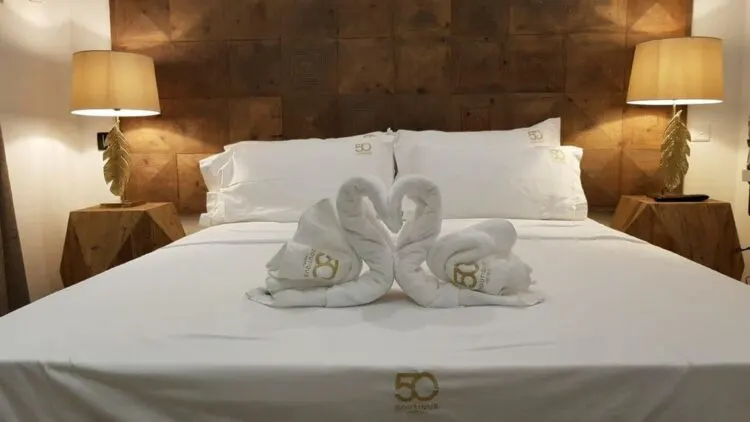
Stay at the 50th Boutique Hotel – a small property in a quiet street in Birgu
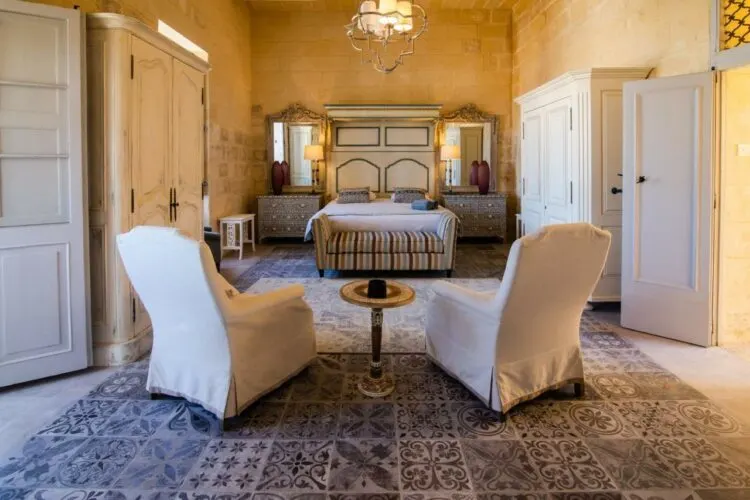
The Palazzino Birgu Host Family Bed and Breakfast is located in an old Palazzo with antique style furnishings
Where to stay in Senglea / Isla Malta
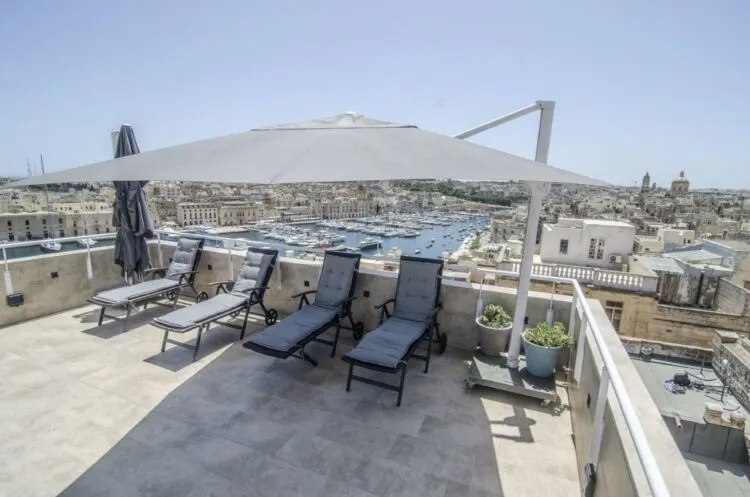
Senglea Suites is a stylish small hotel located close to the waterfront and Gardjola Gardens in Senglea
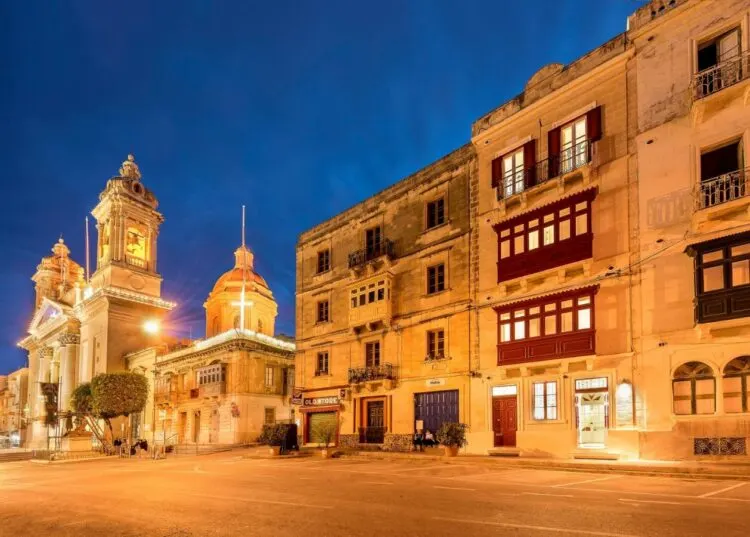
The Snop House is a small boutique hotel filled with art and with a roof terrace in the heart of Senglea
Where to stay in Conspicua / Bormla
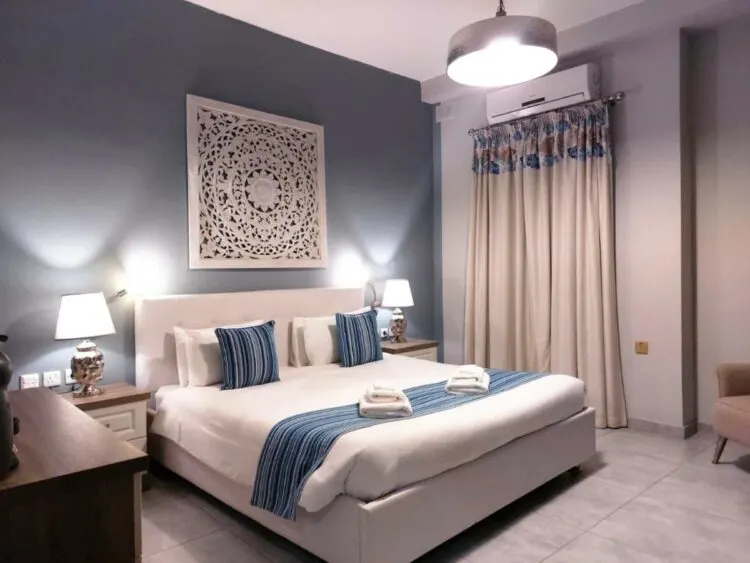
Casa Burmila Boutique Hotel – an elegant small hotel with rooftop pool close to waterfront in Conspicua
Things to do in Senglea (Isla) – Three Cities Malta
Senglea Malta is the smallest of the Three Cities. Originally known as Isla, it was renamed after Grand Master Claude de la Sengle, who started the construction of the fortifications in the 1550s.
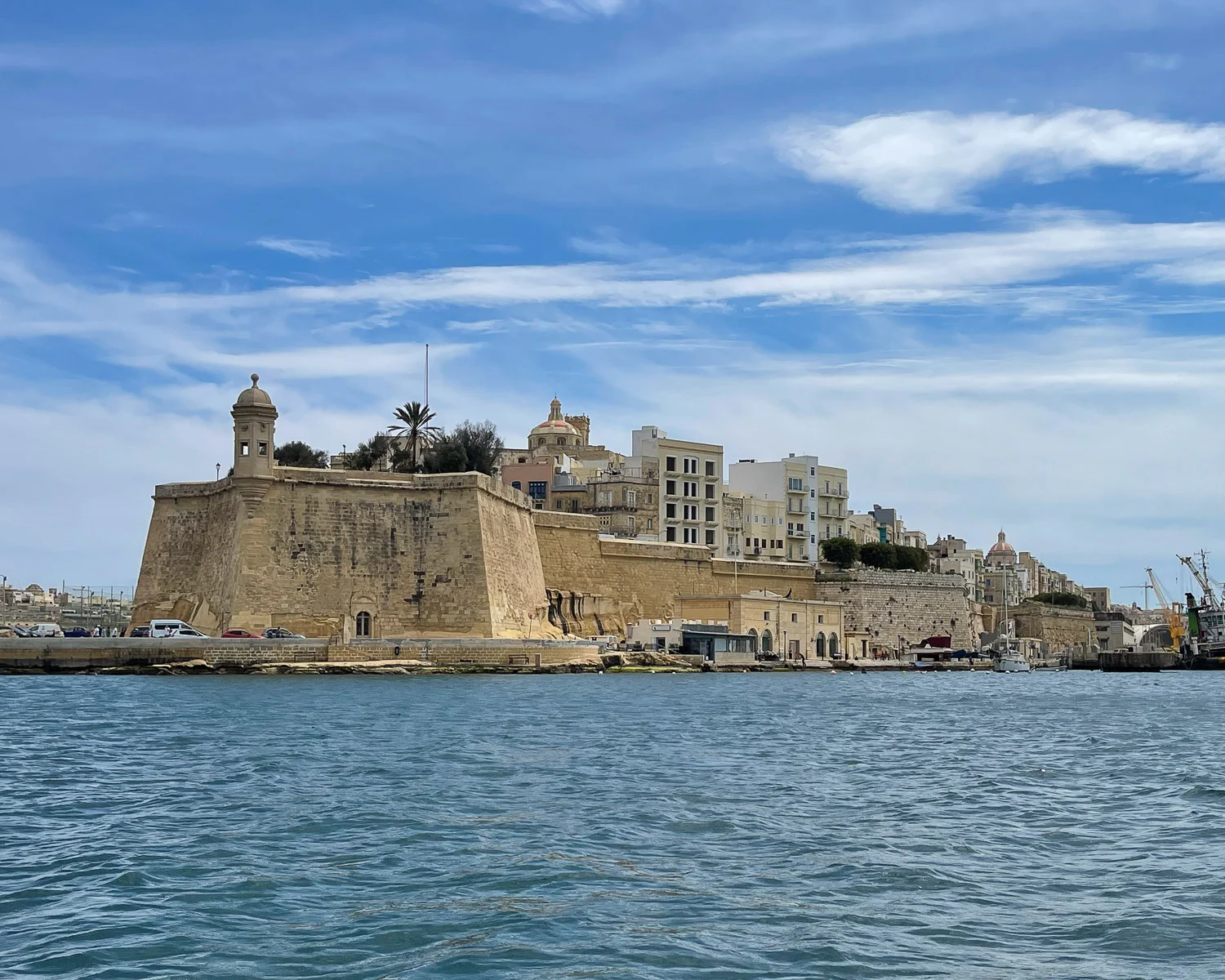
There’s a quieter, more residential feel here, in fact once you climb up the steep steps among the houses it’s less of a city and more of a neighbourhood. Like Birgu, Senglea was fortified by the Knights of Malta, with commanding views from St Michael’s Bastion and Gardjola Gardens over the Grand Harbour.
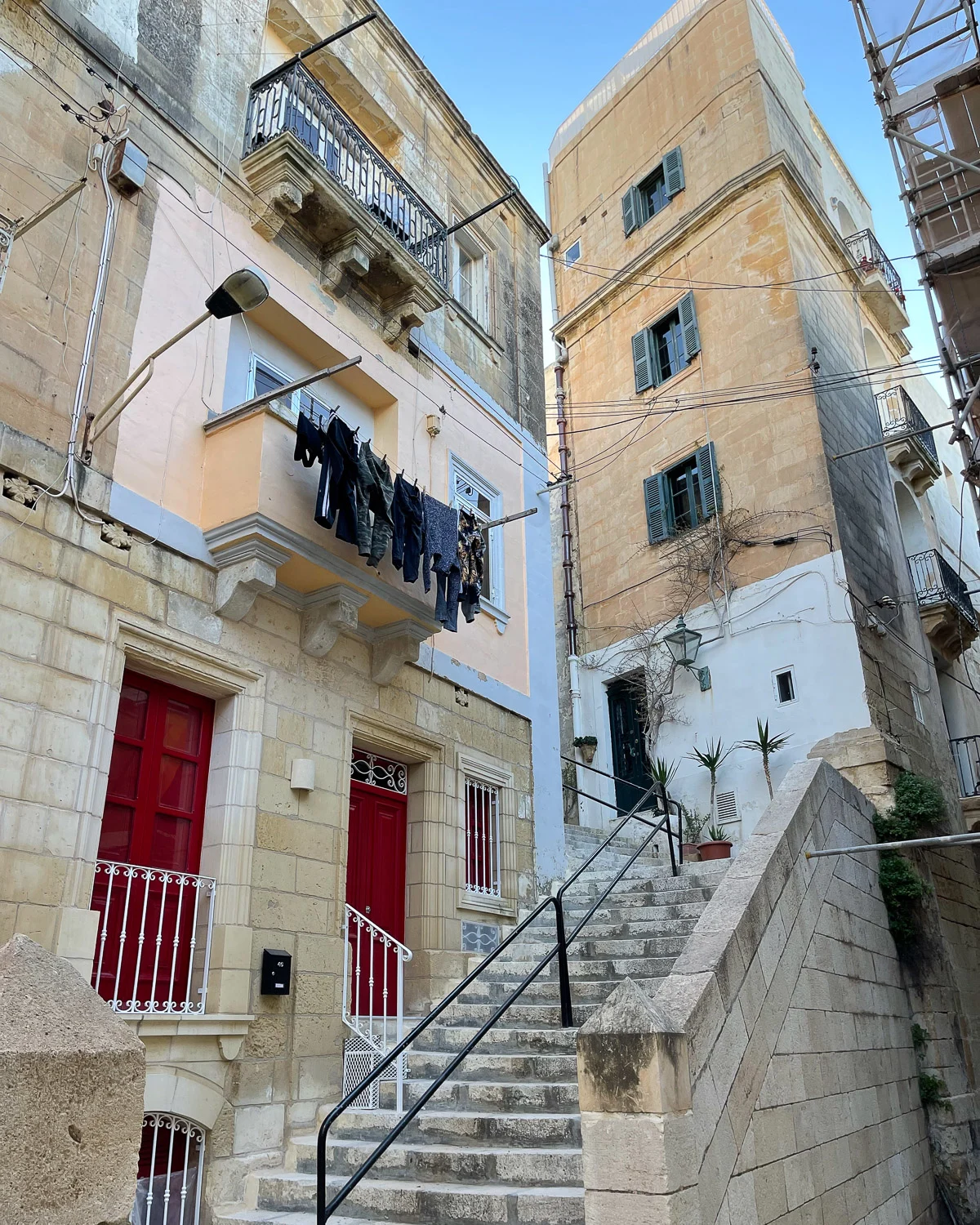
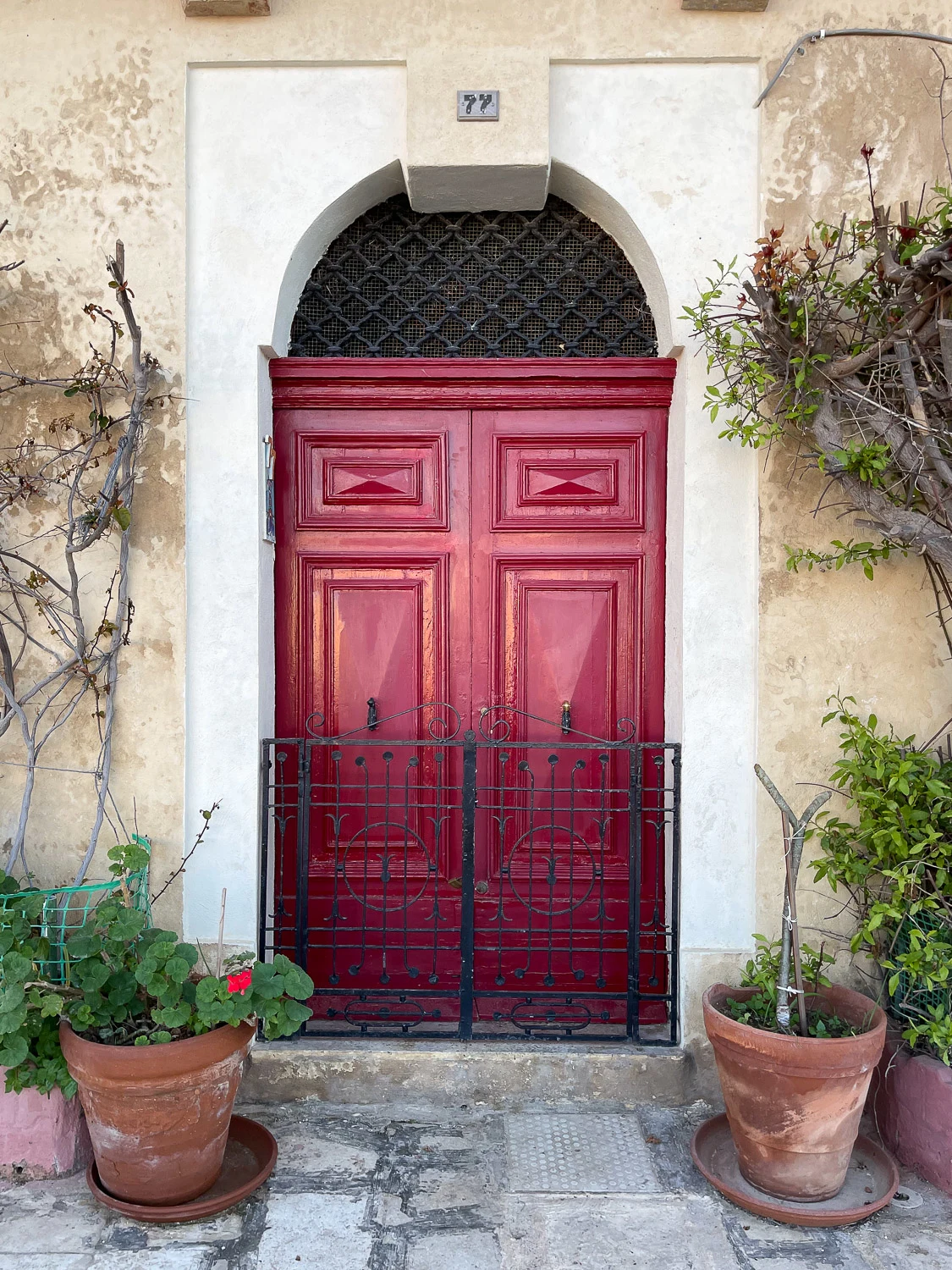
On the east side of the peninsula, the marina faces Birgu, with restaurants lining the waterfront. It’s easy to cross over from Birgu on one of the small water ferries or by the footbridge and wander up through the narrow streets.
Senglea – Gardjola Gardens
One of Senglea’s best-known sights is Ġnien il-Gardjola which means “The lookout gardens”. The Gardjola Gardens are located at the high point of the peninsula, offering beautiful views of Marsa, Valletta and the sights of neighbouring Birgu, including Fort St Angelo. The garden has a central fountain, with shady plantings of shrubs and trees.
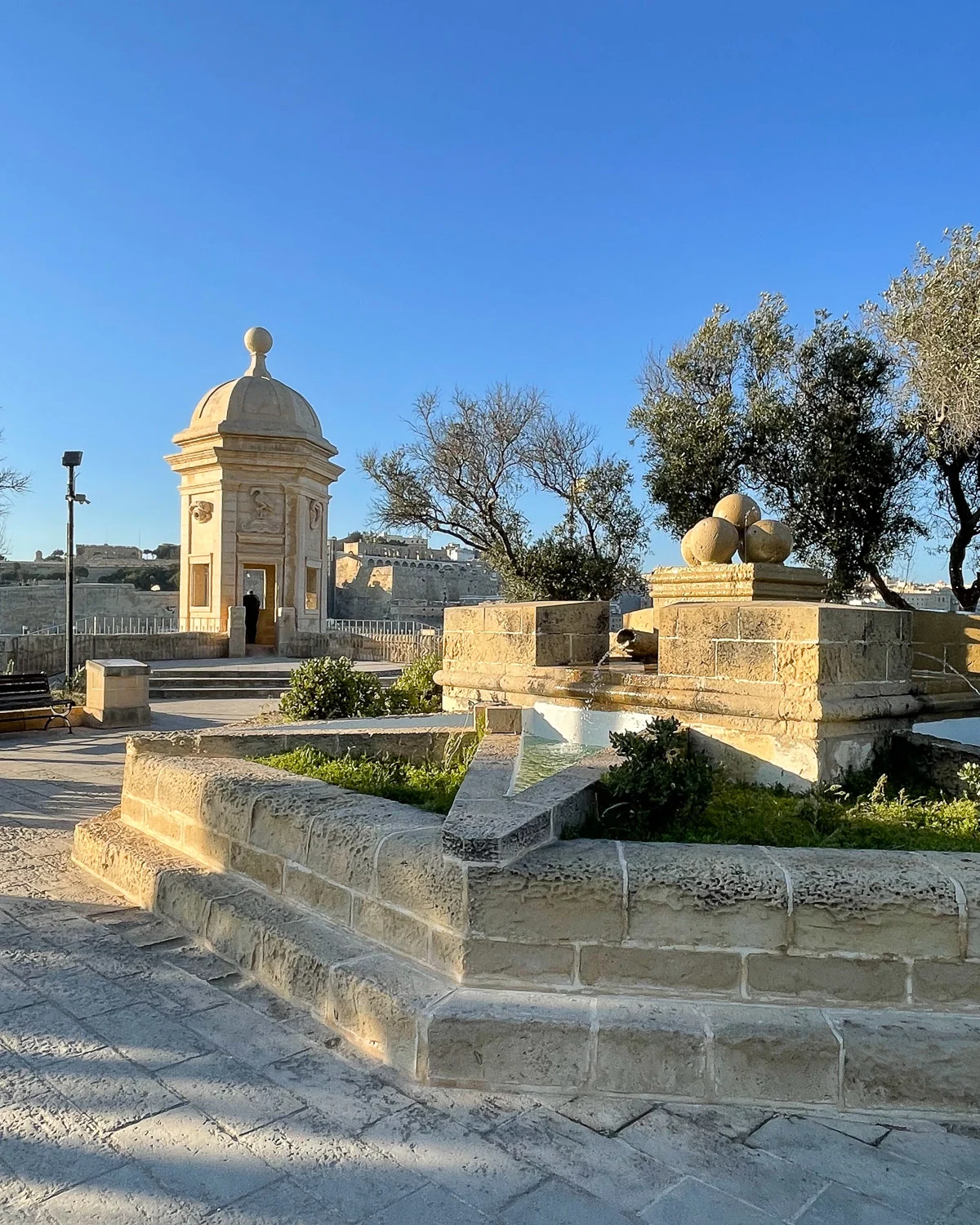
The sentry post at the very end of the gardens overlooks the harbour and served as a lookout. The stone is engraved with many motifs symbolising watchfulness: an eye, an ear, and a crane. There’s also a Latin inscription, promising that residents may rest easy knowing that the tower stands guard over the harbour.
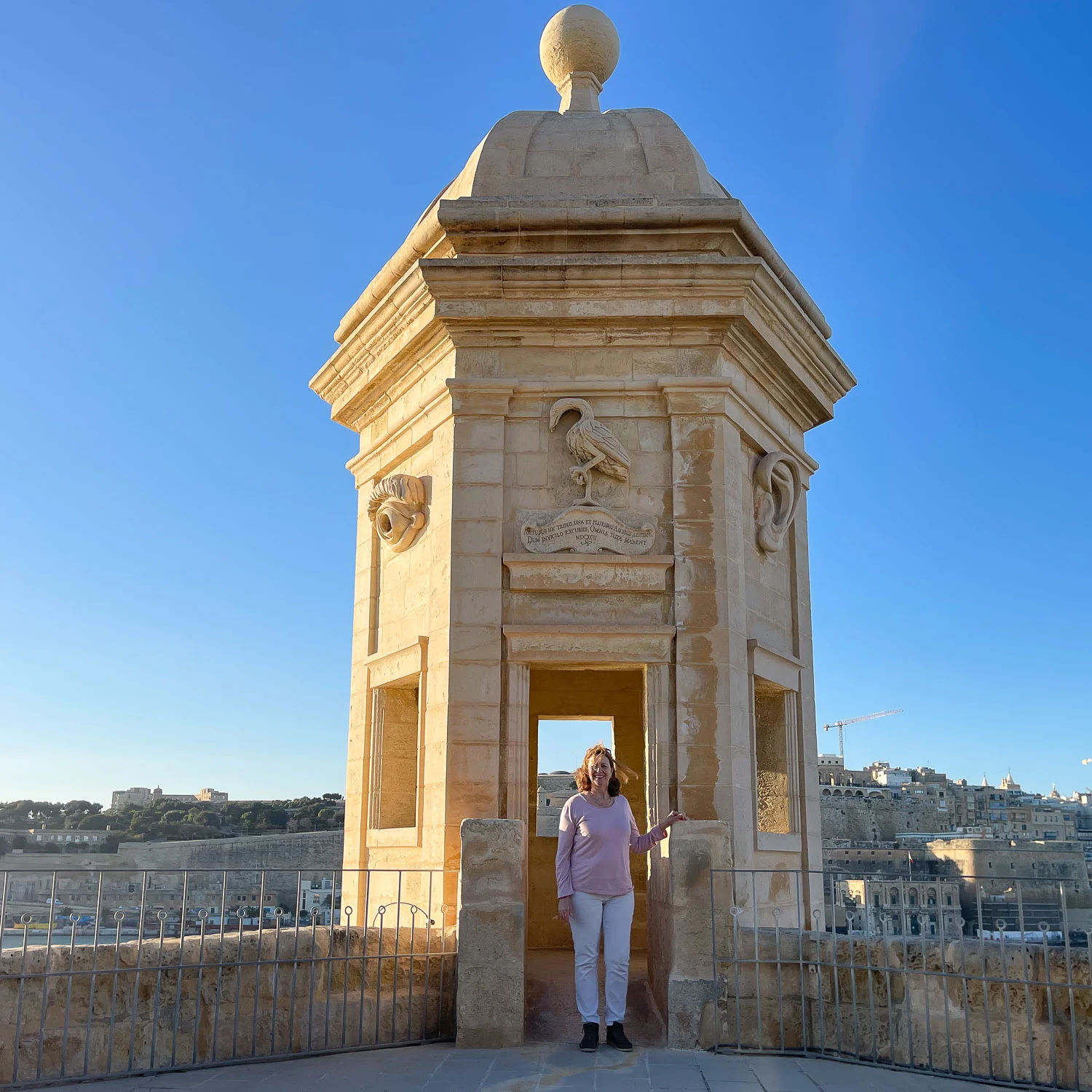
Senglea – waterfront
While houses are closely packed behind the fortifications of Senglea, the waterfront promenade facing Birgu is a flat and pleasant place for a stroll. Seafood restaurants line the waterfront, setting their tables out beside the water and are particularly popular at weekends.
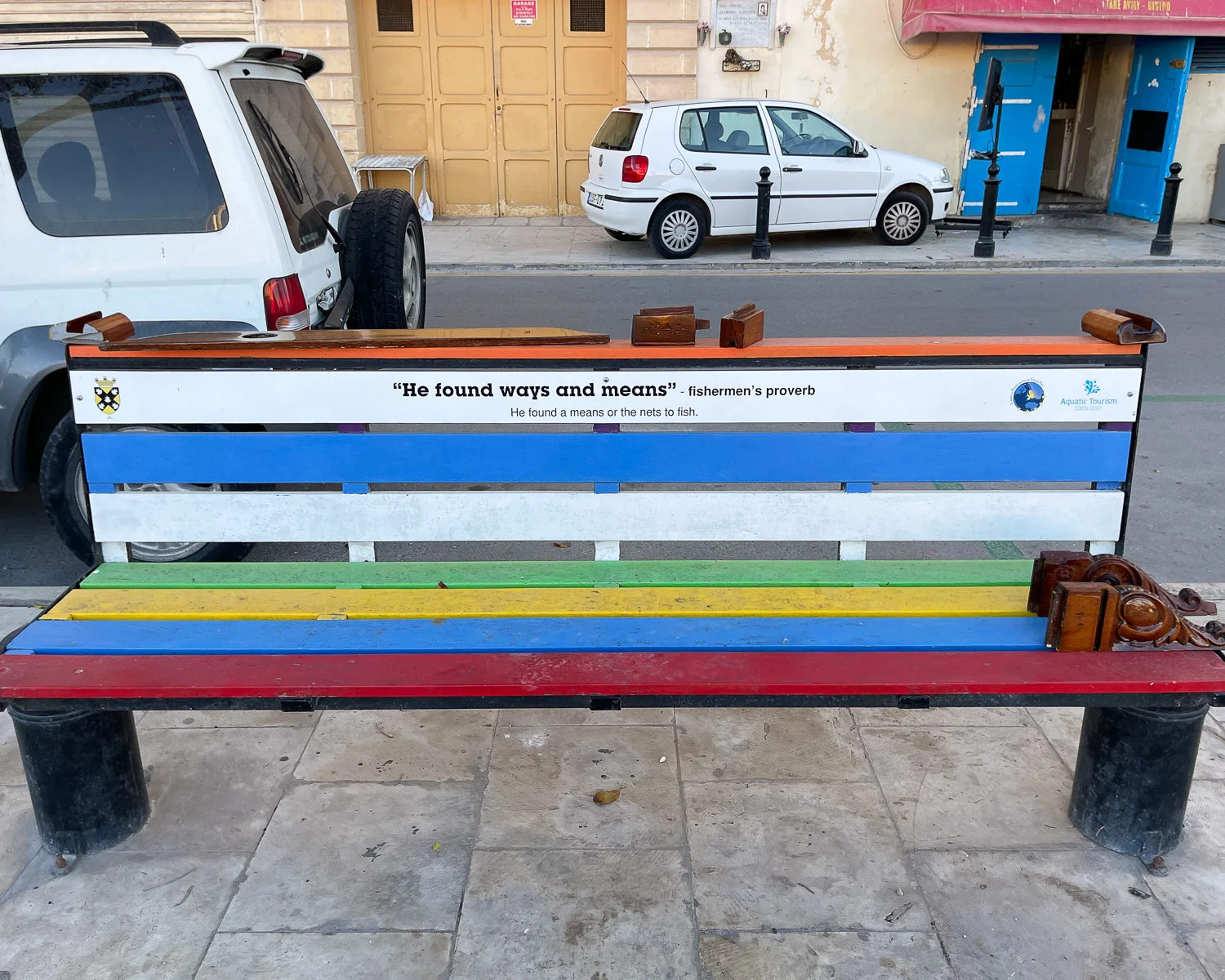
As we wandered past the brightly-painted benches, we noticed that they were marked with Maltese proverbs used by fishermen, such as “He’s turned into a herring!” (meaning he’s lost a lot of weight). At the end of the harbour near where the ferry goes, the DATE Art Café serves coffee, drinks and snacks, and you can sit on the steps looking out at the water.
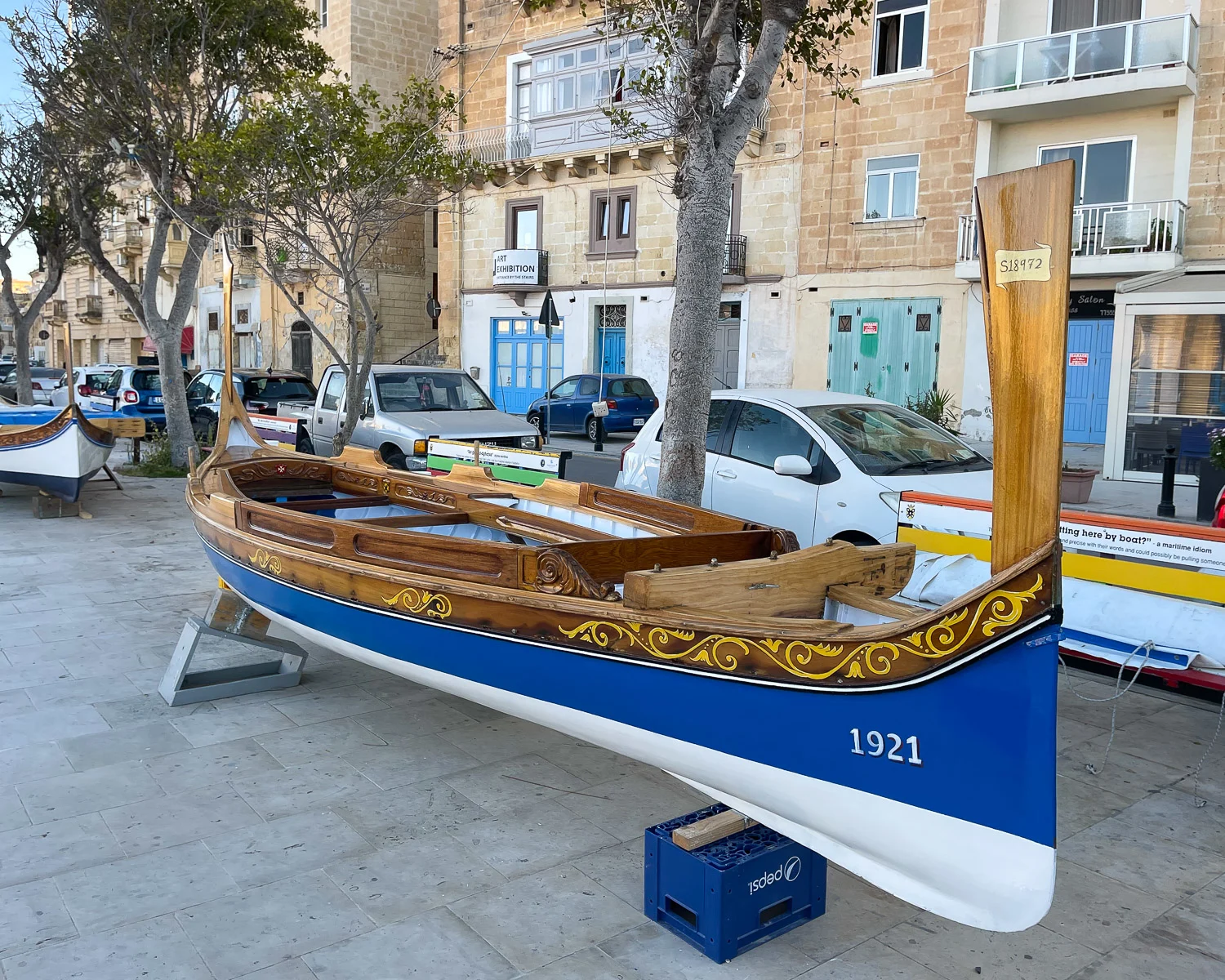
If you want to explore more of the Three Cities, there’s a foot bridge across the marina to the Birgu side. This is also where you can catch the inexpensive Valletta to Three Cities ferry that runs every half an hour.
Things to do in Cospicua (Bormla) – Three Cities Malta
Cospicua or Bormla is the third of the Three Cities and sits between Birgu and Senglea. The area served as a dockyard for British ships during World War 2 and the waterfront is now being restored as a marina. Bormla’s original name was changed by the Knights of Malta to Conspicua, meaning “Conspicuous”, due to its conspicuous bravery during the Great Siege of 1565.
Due to wartime bombing, little of the old city survived, with the exception of the parish church of the Immaculate Conception. The city is devoted to its patron saint the Virgin Mary, and the annual fiesta on 8th December 8th is a major event.
Conspicua – fortifications
Cospicua’s fortifications and surrounding walls were constructed between 1638 and 1722. The Firenzuola Fortifications or Santa Margherita Lines, were the original defensive walls started in 1638. However before they could be completed, work was started on the Cottonera Lines which provided even more extensive fortifications.
The curtain walls and bastions protect not only Cospicua but the whole of the Three Cities, which occupied an important position on the coast that needed to be fortified against invasion from the land side.
The city’s historical main entrance is through the imposing St Helen’s Gate. It’s an ornate French Baroque-style stone gate built into the Firenzuola fortifications where the entrances on either side have been enlarged to allow modern roads to pass through.
Conspicua – Bir Mula Heritage Museum
Located not far from the Malta at War Museum, the Bir Mula Heritage Museum is a privately run museum that displays artefacts from daily life in Malta through the ages. The building itself has a rich history and has developed from a medieval farmhouse into a palazzo with many rooms and levels, that give a glimpse of the different activities that went on in the home.
The finding of many bones, tools and archaeological artefacts where the museum stands, prove that Bormla was inhabited in prehistoric times. It’s a small museum, open weekends from 10am to noon, or by appointment other days.
Things to do in Kalkara – Three Cities Malta
Although the Three Cities only includes Birgu, Bormla, and Senglea, Kalkara is so close to Birgu that it’s considered an extension of the Three Cities. It occupies the peninsula next to Birgu and developed from a tiny fishing community.
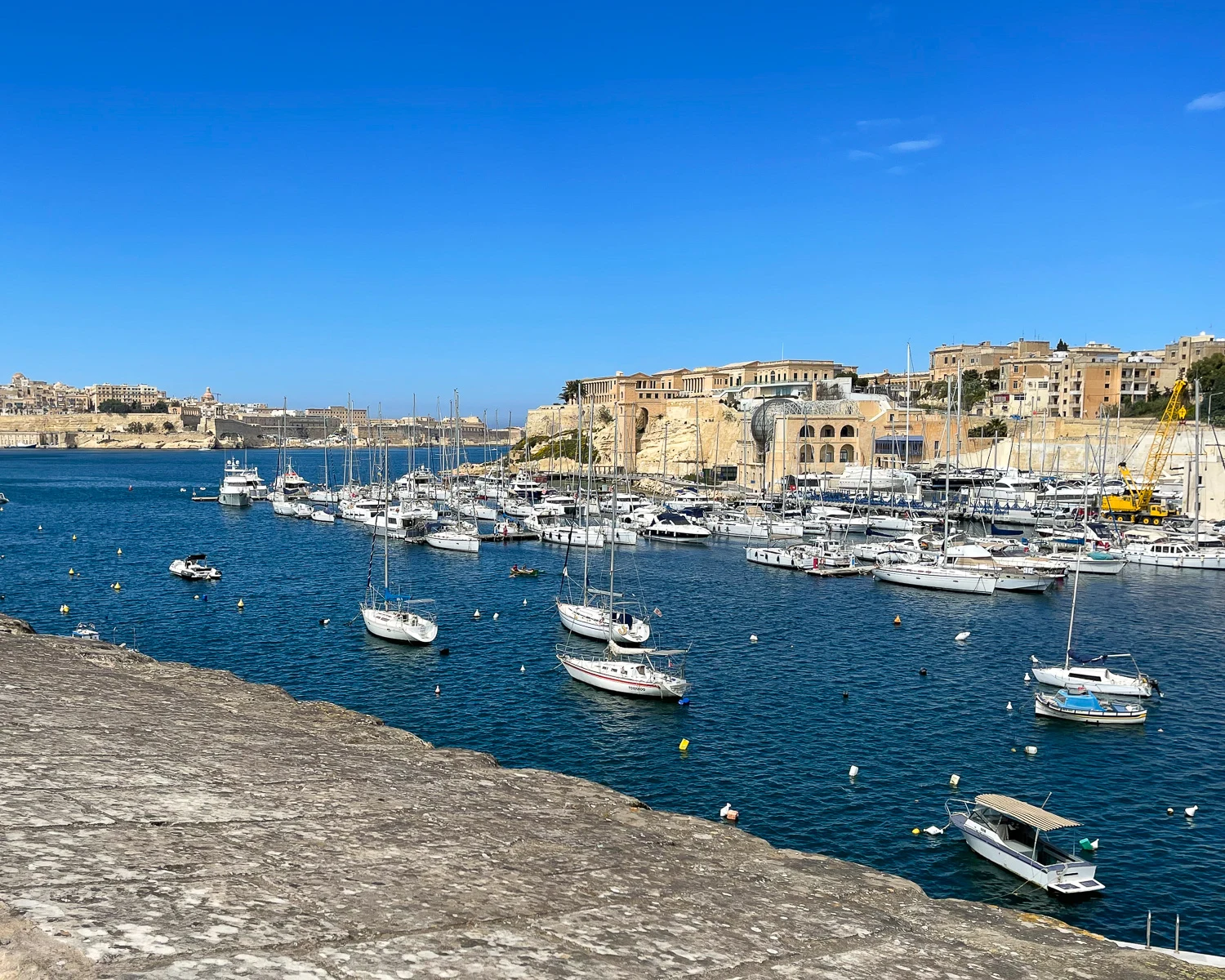
While Kalkara is quieter than Birgu, it’s worth exploring the area if you have time. Opposite the Birgu harbour is the picturesque Kalkara Marina, which is just a short walk from several restaurants and cafés. It’s also close to the Esplora Interactive Science Centre, which is aimed at children of all ages. Esplora was built around an old naval hospital and features interactive displays, an outdoor activity centre and planetarium.
Further out, on the city’s east shore, is Fort Rinella, a Victorian-era artillery battery. It was built to operate a single canon, the Armstrong 100 ton gun, which protected the entrance to the Grand Harbour. A small museum contains memorabilia from the Victorian British army in Malta.
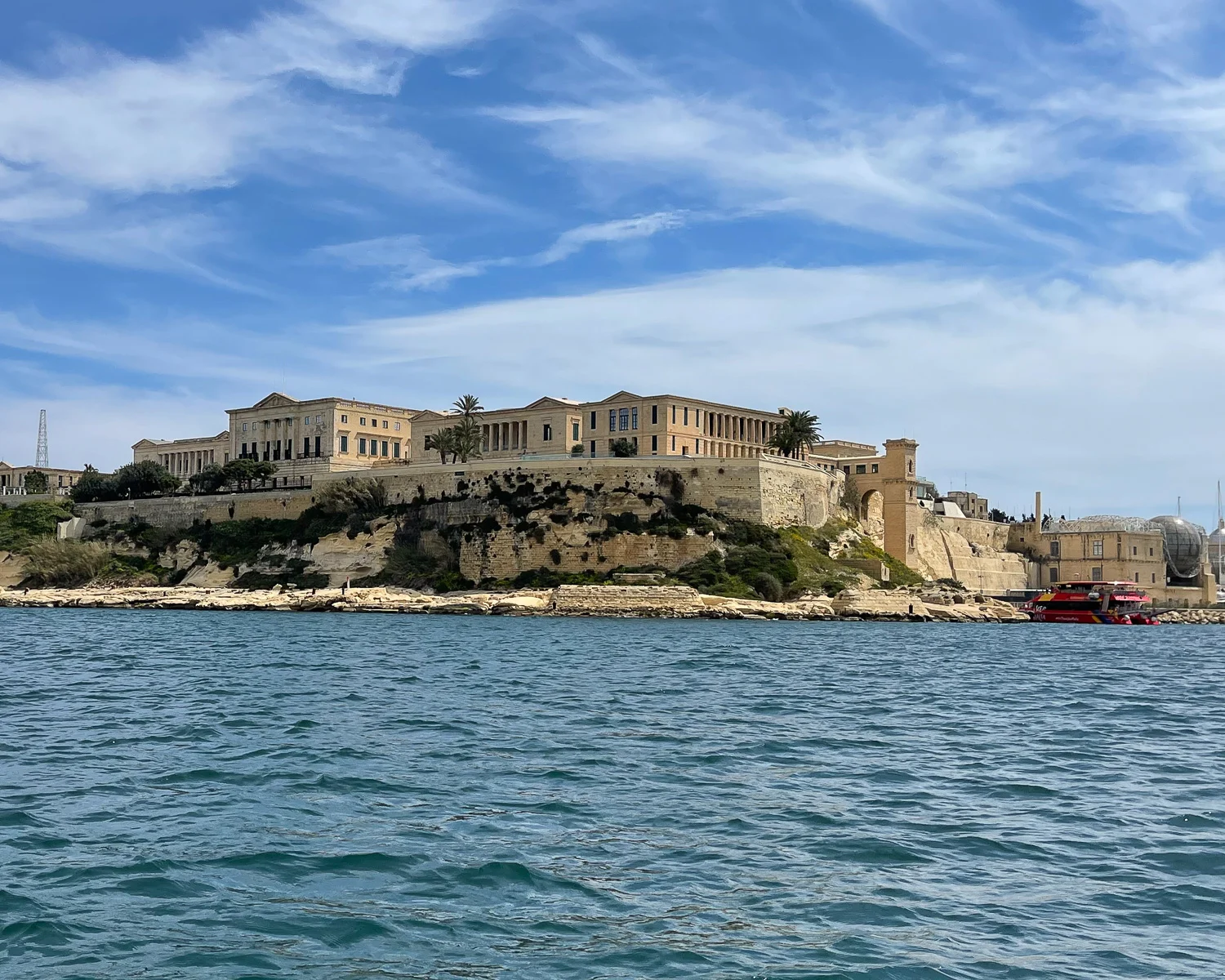
The much larger Fort Ricasoli, at the point of the peninsula, is closed to the public. It has been used in the past by the Malta Film Commission as a film set for productions such as Troy, Gladiator and Game of Thrones.
How long do I need to visit Three Cities Malta?
The Three Cities make an ideal day trip from Valletta or other parts of Malta. In a day you will probably be able to wander around Birgu and perhaps see a bit of one of the other peninsulas nearby. In a couple of days, you can easily see the main sites of all the Three Cities areas: Birgu, Senglea and Bormla.
If you are struggling to find accommodation in Valletta, staying in the Three Cities is a good alternative for a more affordable and local experience.
Where to eat in Three Cities Malta
BeBirgu – From Birgu waterfront, walk up beside St Lawrence’s Church to find Victory Square, where the most imposing of the cafes is BeBirgu. Inside you’ll find a delightful internal courtyard with fountain in this former Palazzo. It’s a great place for a coffee and they also serve Italian and Mediterranean dishes.
In Birgu / Victoriosa, Victory square is a great place to eat lunch, with several different cafes and there are also numerous restaurants along the waterfront.
Terrone – We had lunch in Birgu at this Michelin awarded restaurant with a pretty outdoor terrace overlooking an internal harbour by Fort St Angelo. The inside of the restaurant is within the walls of the Medieval bastion, but you can also walk around the marina to reach it. Terrone’s menu is all about fresh seafood and local produce with a stylish ambiance and excellent service.
On all the waterfronts of Birgu, Senglea and Kalkara there are a wide range of restaurants to choose from, with nice views of the harbour. Many of them specialise in local seafood and have tables set by the water.
Read my article – Delicious Maltese Food – where and what to eat
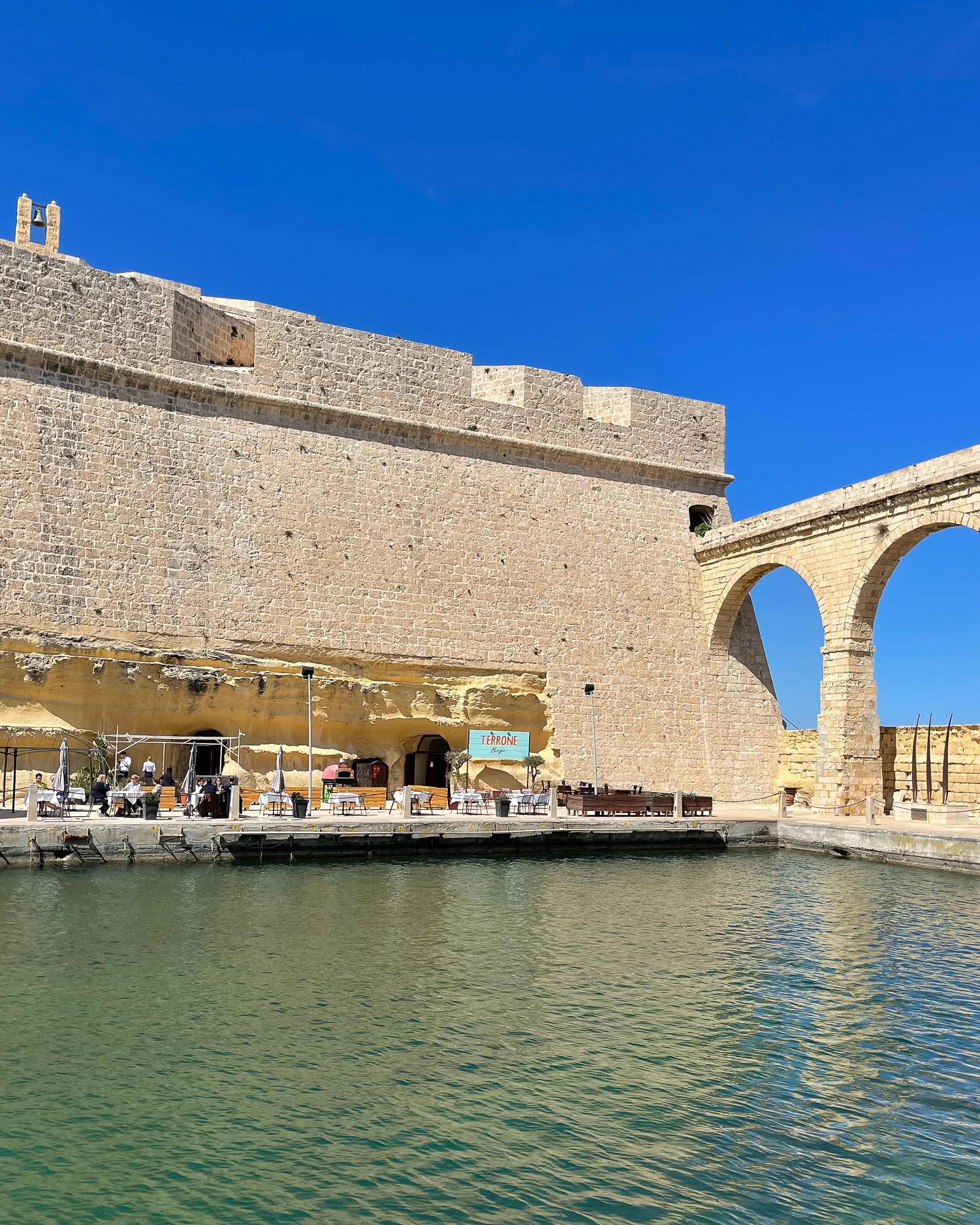
Where to stay in Three Cities Malta
Check out our individual hotel recommendations below or use the map to find the best hotels in Three Cities Malta.

Stay at the 50th Boutique Hotel – a small property in a quiet street in Birgu

The Palazzino Birgu Host Family Bed and Breakfast is located in an old Palazzo with antique style furnishings

Senglea Suites is a stylish small hotel located close to the waterfront and Gardjola Gardens in Senglea

The Snop House is a small boutique hotel filled with art and with a roof terrace in the heart of Senglea

Casa Burmila Boutique Hotel – an elegant small hotel with rooftop pool close to waterfront in Conspicua
Best time to visit Three Cities Malta
Malta is located very close to the southern shores of Sicily and enjoys year round sunshine and hot summers. The ideal time to visit for sightseeing is Spring (March – May) and Autumn (September – November), when the days are warm and sunny but not unbearably hot.
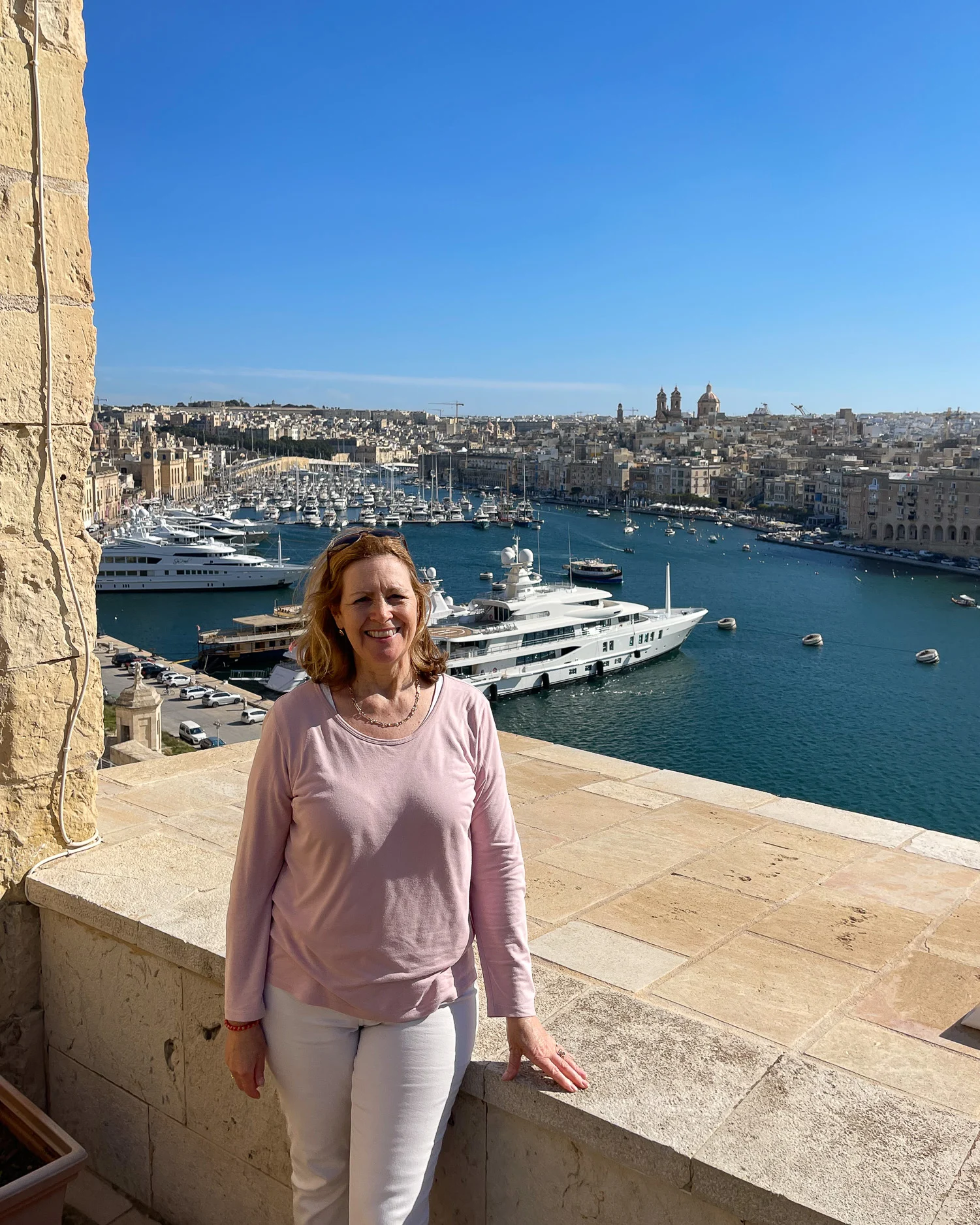
Personally I would avoid visiting in the heat of the summer – July, August and even parts of June and September – unless you are visiting Malta for a beach holiday and want to visit Three Cities on a day trip.
December, January and February bring rain but the winter is mild and you can still get sunny days. However you may not get the best of Malta’s Mediterranean climate in winter.
Spring and autumn bring ideal sightseeing weather. We visited in March and enjoyed the warmth and sunshine, with ideal temperatures for sightseeing.
Getting around the Three Cities Malta
The narrow streets and many steps of the Three Cities, mean that the best way to explore is on foot or by water taxi.
Another fun activity is to take a sightseeing tour of the Three Cities with the Rolling Geeks. These self drive electric cars look a bit like a golf buggy and are pre-programmed with a GPS driven navigation and sightseeing commentary. They are eco-friendly, suitable for families and you can stop at any of the sightseeing points en route. A typical tour takes around 2.5 hours.
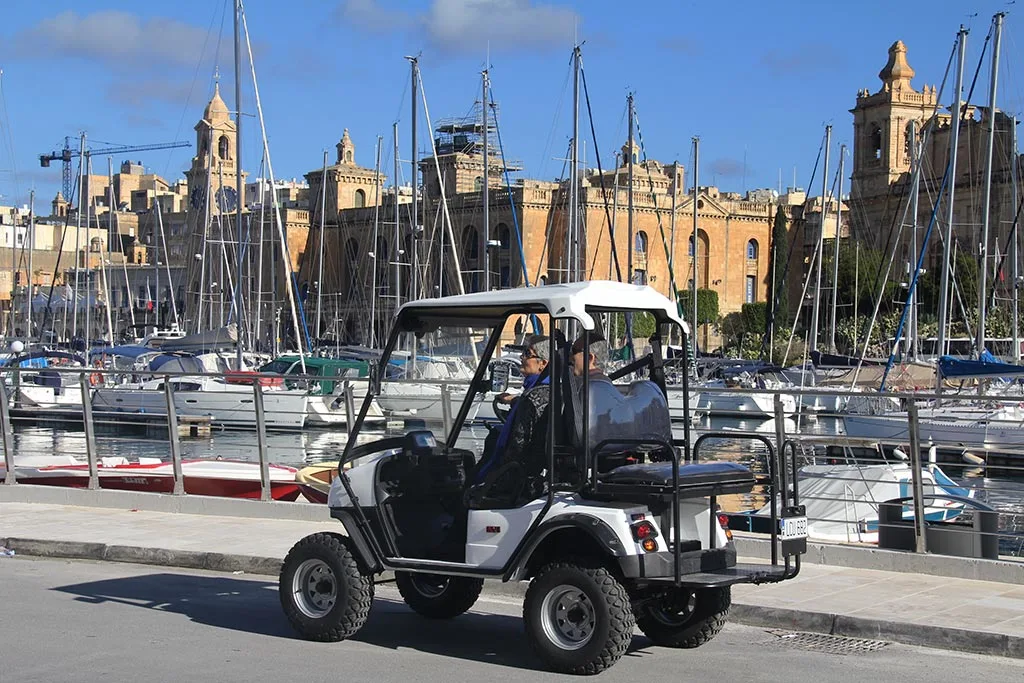
There is also a tourist train known as the “Happy Train” that runs from the Birgu waterfront, in front of St Lawrence’s Church. This is a good option if you want a quick and relaxing overview of the main sites. The tour takes around 40 minutes.
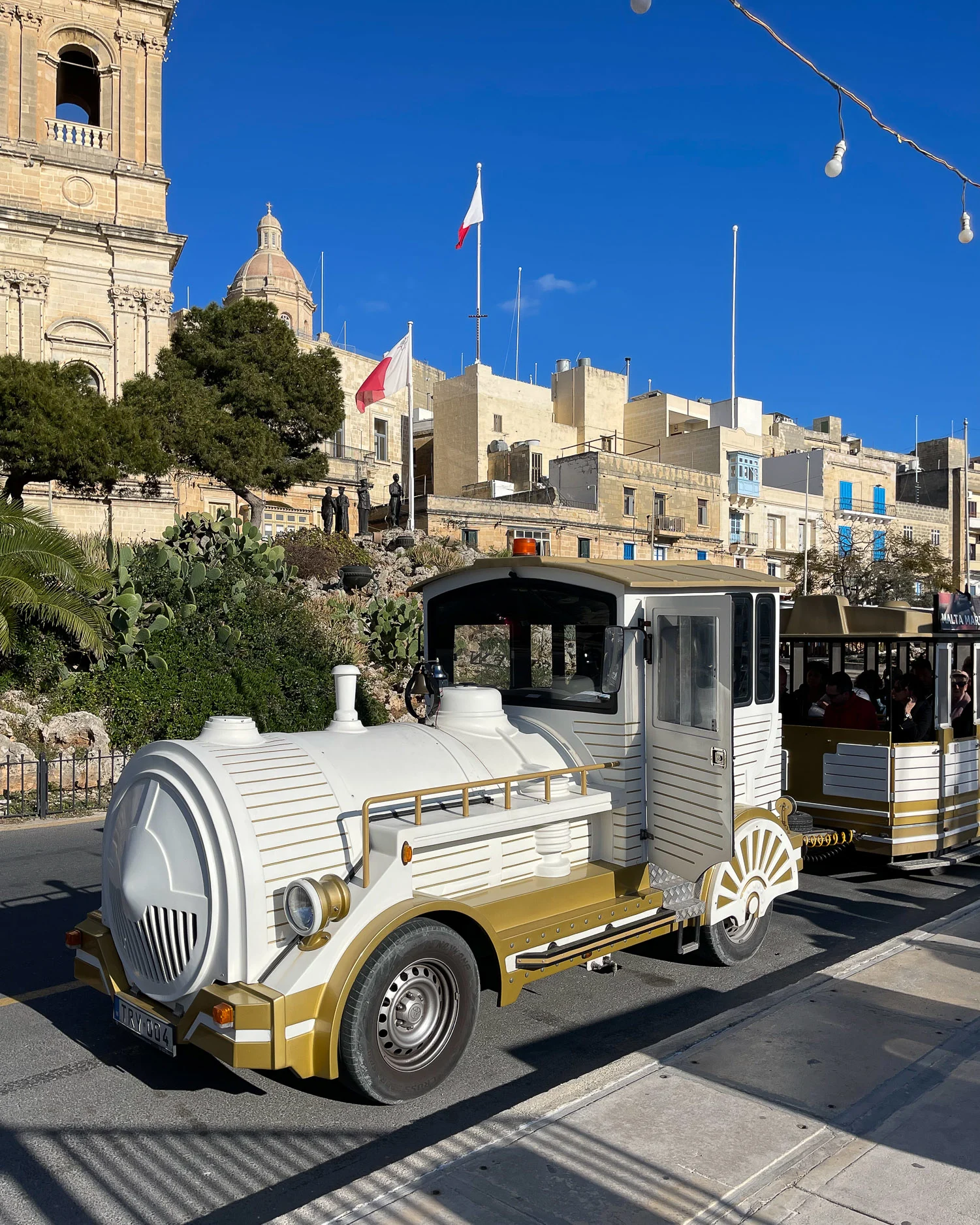
Getting to Three Cities Malta
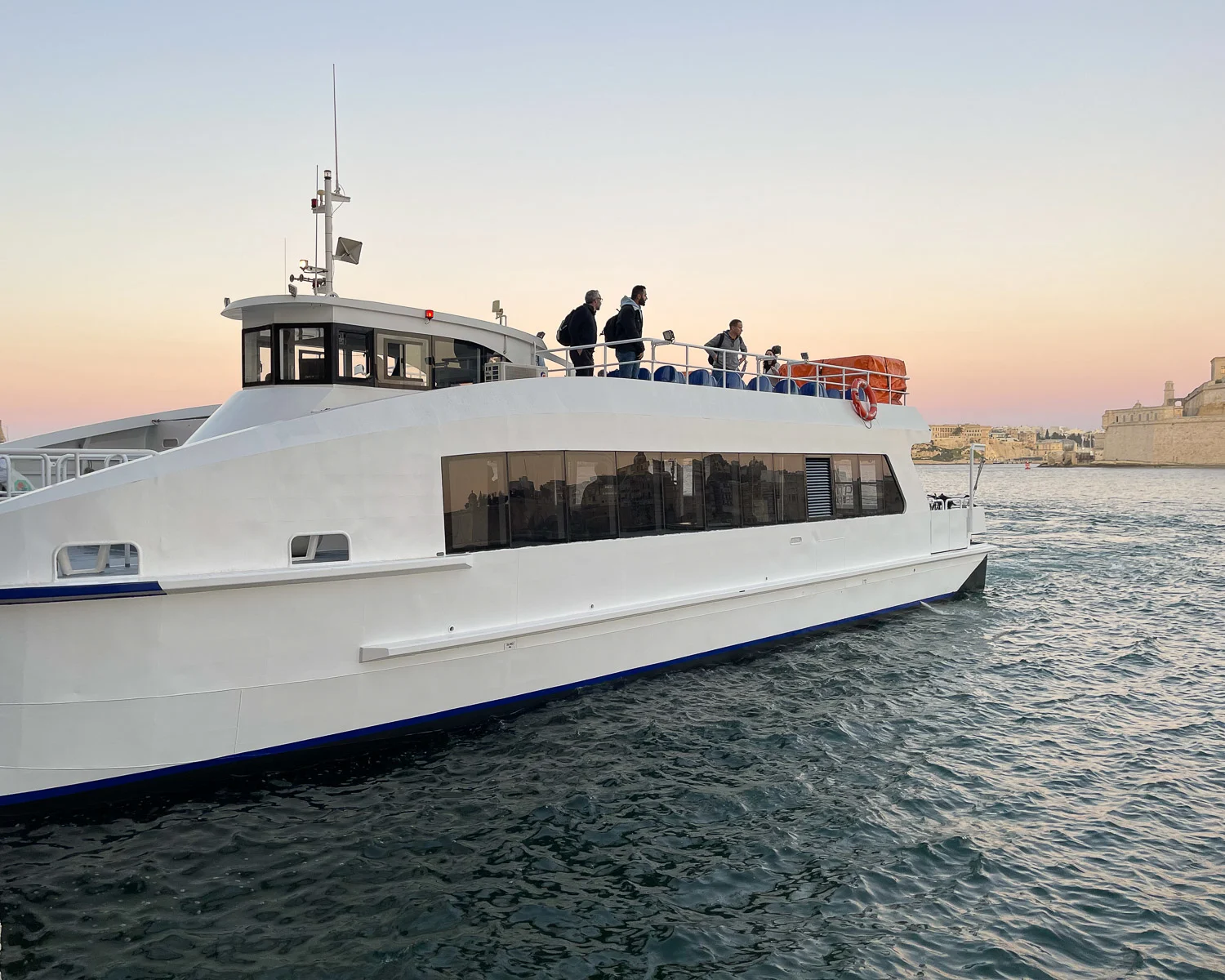
Getting from the airport
Most international travellers will arrive in Malta via a flight into Malta’s Luqa airport or on a Mediterranean cruise. If you wish to use transport that avoids flying within Europe, there are easy train and ferry routes through Italy that will bring you to Sicily and from there you can take the daily ferry service to Malta.
From Malta Airport to Three Cities, take the X4 public bus to Valletta bus station. Each single bus journey in Malta is €2 and you can pay on the bus with card or cash.
Bus to Three Cities Malta
From Valletta bus station change to the No 1, 2, 3 or 4 bus to Three Cities. Alternatively you could take a taxi from Valletta bus station to your accommodation in Three Cities.
Ferry to Three Cities Malta
To take the Valletta to Three Cities ferry, find the Upper Barrakka gardens in Valletta and take the lift down to the lower level. From here, cross the road to the ferry station for Three Cities. There are two ferry points close to each other.
One is for the small Dgħajsa ferries that constantly cross the harbour and operate like water taxis. The other is for the public ferry that is larger and operates much like a bus, with crossings every half an hour.
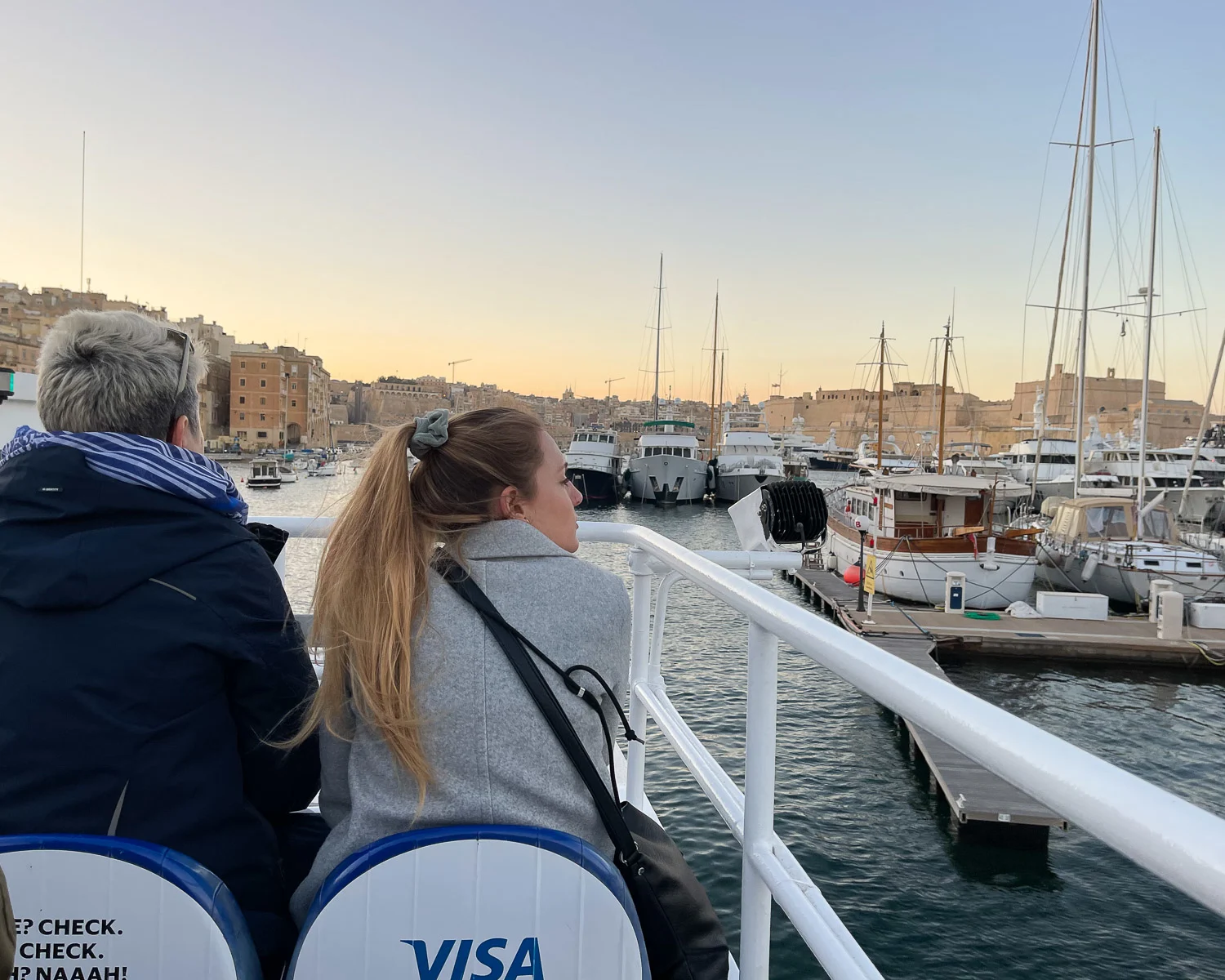
Taxi to Three Cities Malta
If you are concerned that you won’t be able to walk from the bus station or ferry terminal, you can take a taxi from the airport or other locations in Malta. The streets of Three Cities are narrow and sometimes pedestrianised, so not all locations are available for drop off at your accommodation, but taxis will get you as close as it’s possible. The white official taxis are widely available, or use the Bolt taxi app.
Car Hire in Three Cities Malta
Using a car in Three Cities itself is not advised as many streets are pedestrianised, there is little parking and efficient public transport alternatives are available. However if you plan to hire a car to visit other parts of Malta, we recommend checking Rental Cars to compare options and best prices.
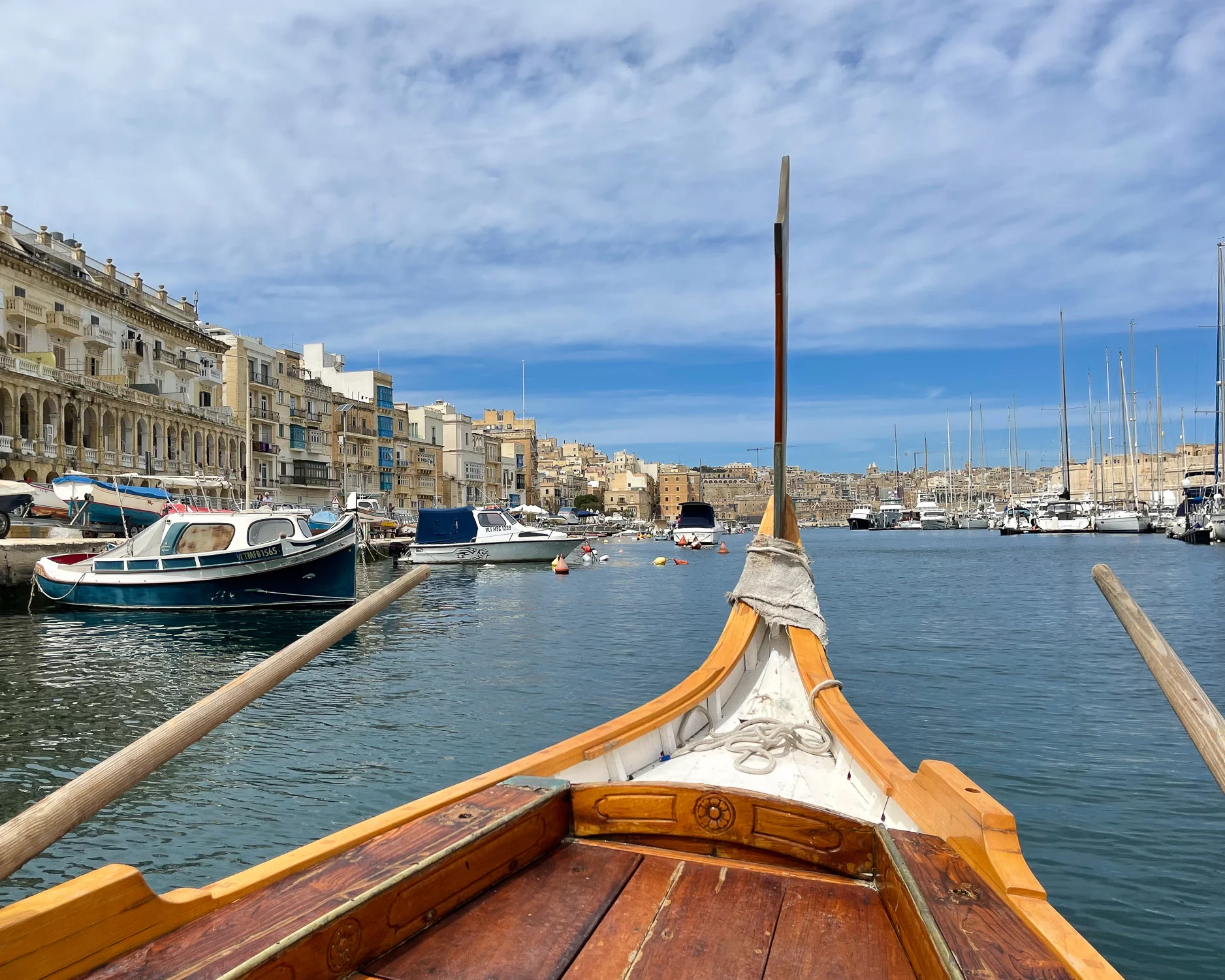
Plan your trip to Malta
For more information on things to do in Malta, visit the official Visit Malta Tourism website.
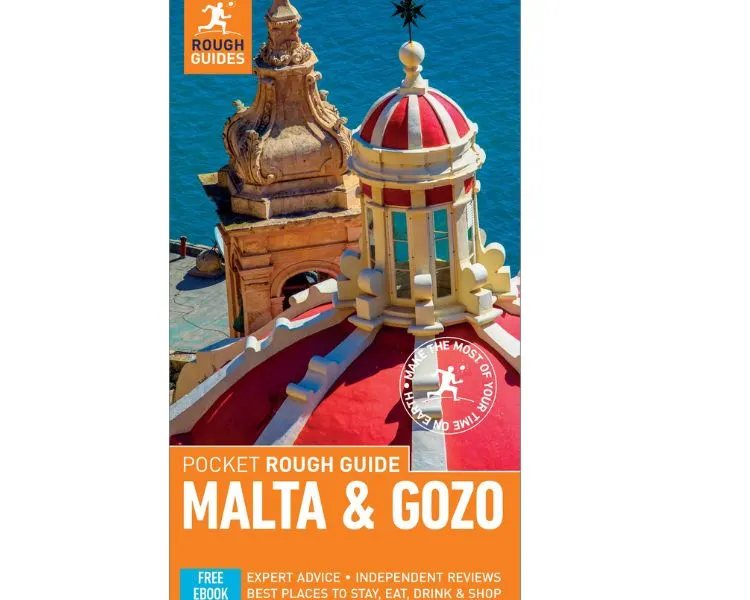
Need a guide book for Malta? We recommend the Pocket Rough Guide to Malta and Gozo
More articles about Malta
- 20 things to do in Valletta Malta
- Delicious Maltese Food – where and what to eat
- Fun things to do in Gozo – the quiet sister island to Malta
- Where to stay in Malta – best locations and hotels
- Things to do in Malta in a weekend break
- Things to do in Valletta, Malta in one day
- Enjoy the food and fireworks of a Maltese Festa
- 21 best things to do in Malta
Pin it
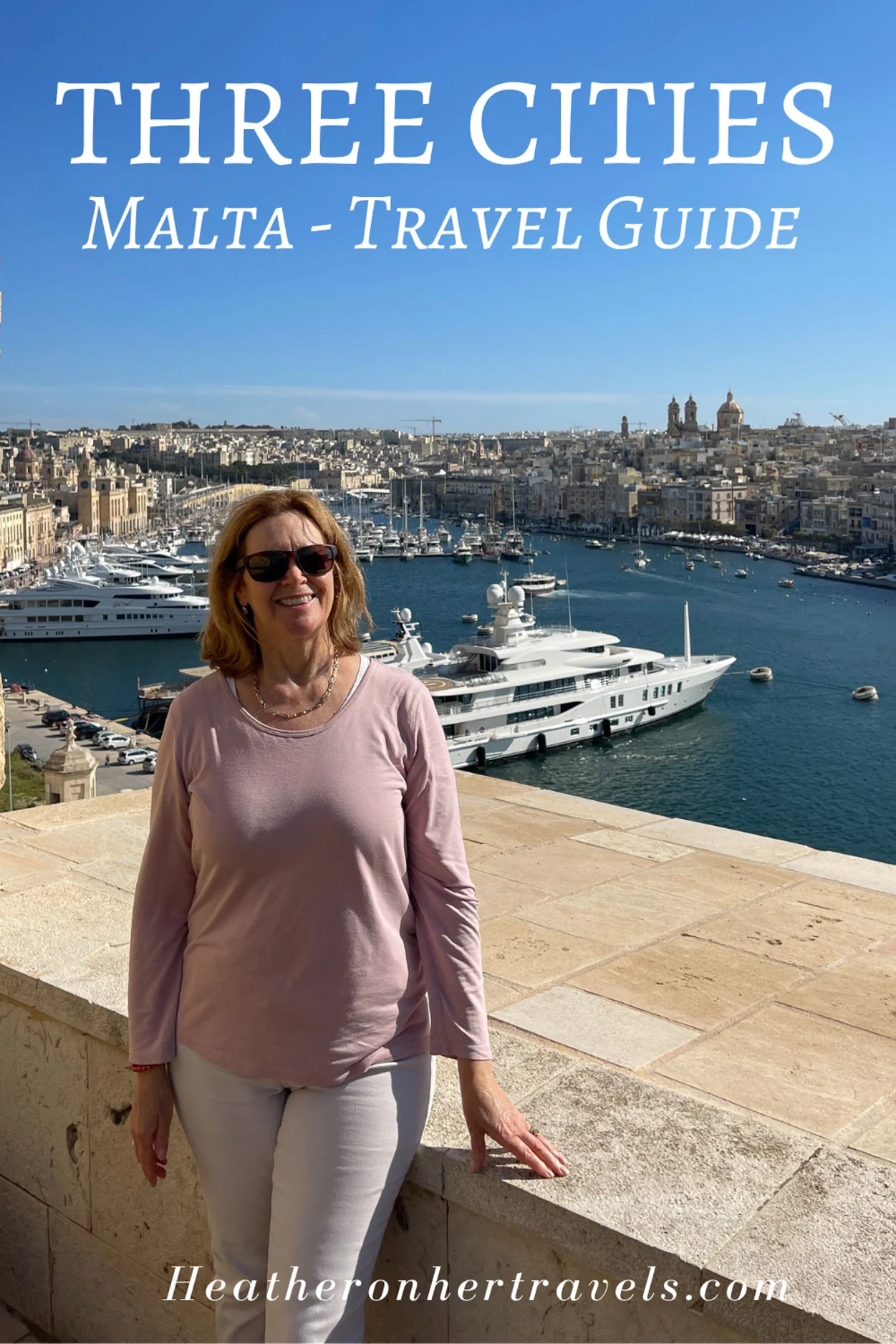
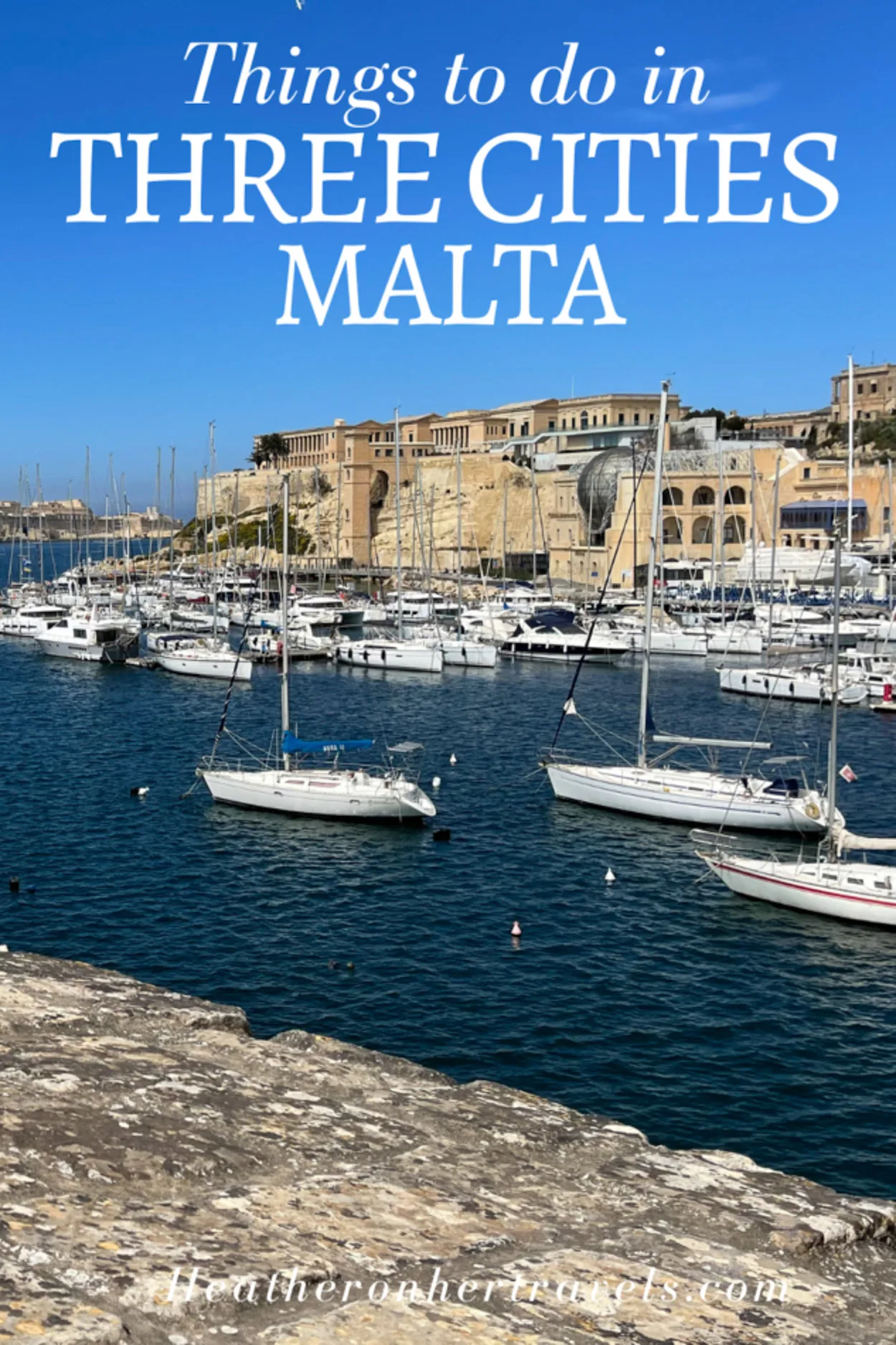
Some of the experiences mentioned were provided* on a press trip hosted by Malta Tourism and British Guild of Travel Writers.
* More info on my policies page
This article is originally published at Heatheronhertravels.com

